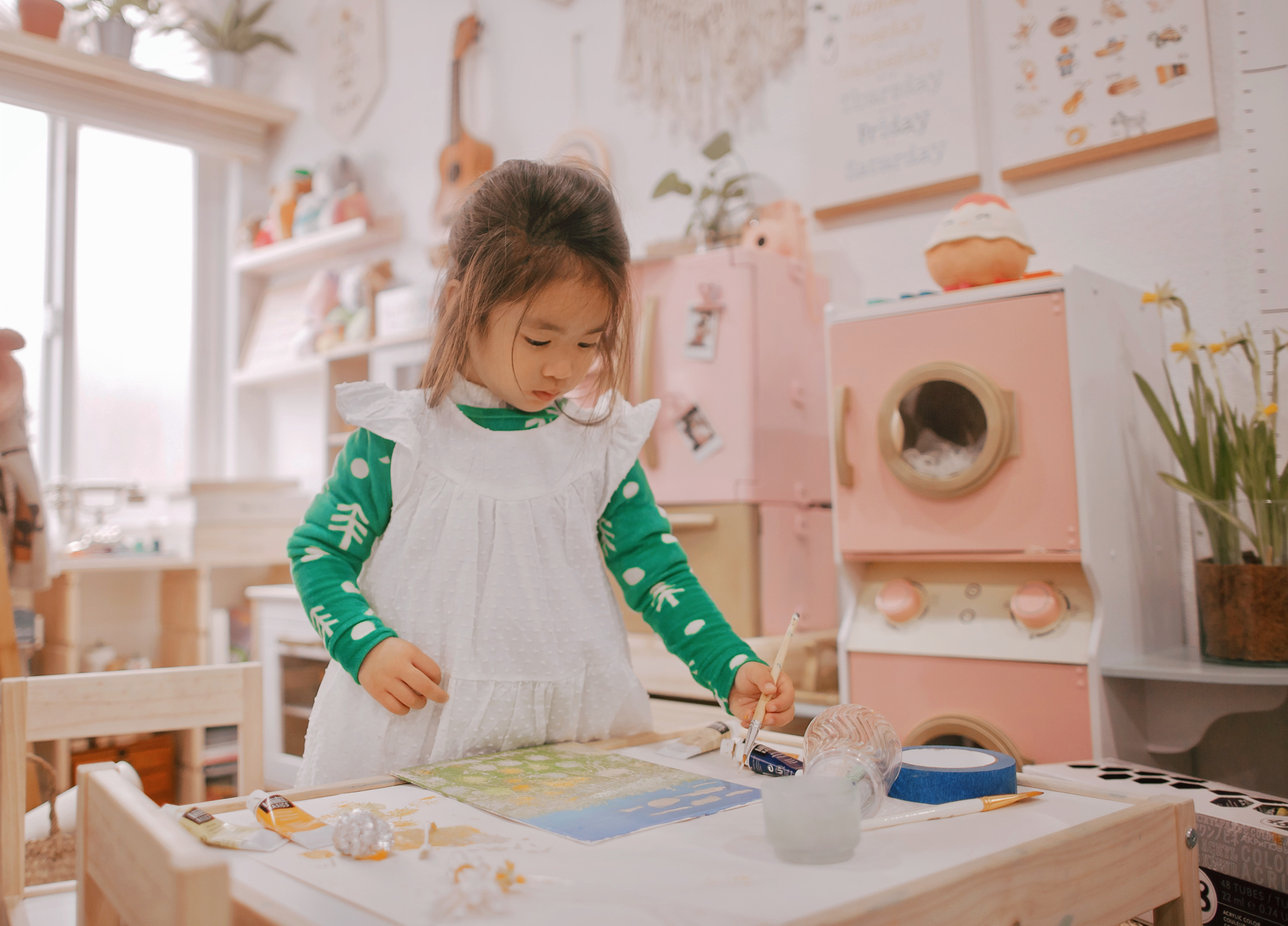
“The education of even a very small child does not aim for preparing him/her for school, but for life.” – Maria Montessori
Although our toddler playroom is all set up for pretend play, our daily activities pretty much revolve around “real play” with practical purposes. The way I perform my everyday activities (doing laundry, cooking, playing piano, embroidering…) impacts NyNy and she is more interested in performing these tasks with me rather than playing with her toys. At first, I was trying to entertain NyNy by playing with her pretend play sets, but soon we both got bored and I got exhausted in helping her clean up messes (while I got tons of works undone). Then I figure out, “How about just doing my own things and let NyNy participate?”; that way she is able to engage in real life activities, make her feel important, and gain self-esteem. In short, our Montessori-at-home’s motto is, “Engagement over Entertainment”!
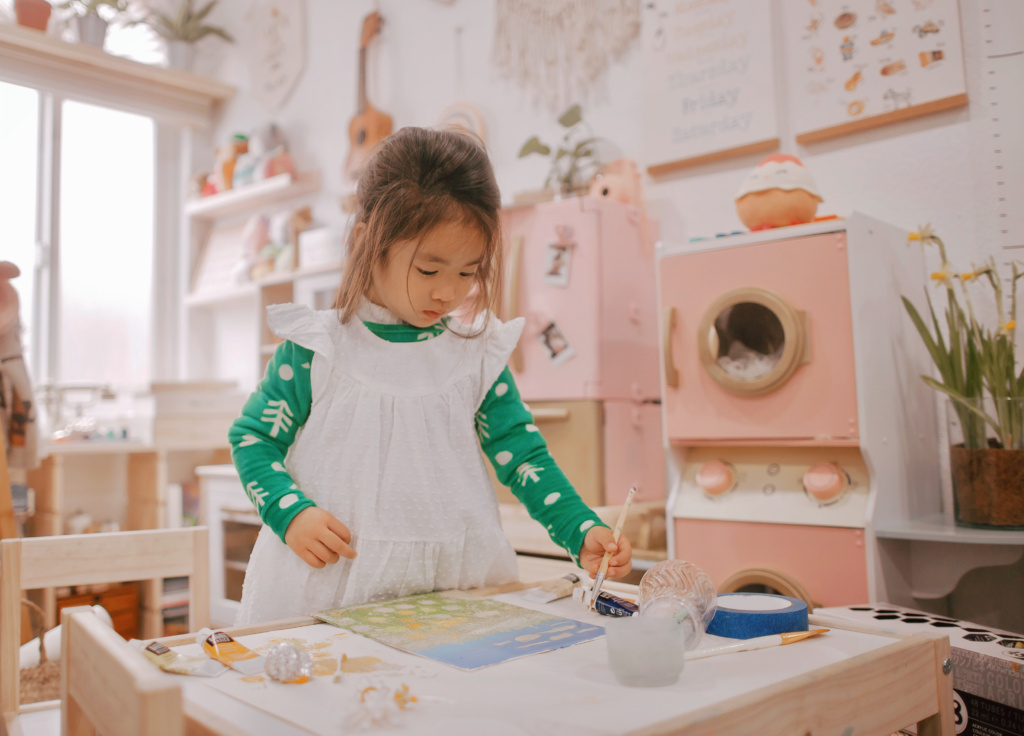
You’ve probably heard about the Montessori method of teaching. Maybe you’ve read online about the simplicity of Montessori materials or have heard about it from a friend. And maybe you’re probably already practicing Montessori and you don’t even know it! If you have taken your child on a walk, or play at the beach, or just allow them to crawl or run around in your backyard then you have done some sensory activities already! This guide details everything you should know about sensory play and practical life activities.
There are five distinct areas of Montessori education: Practical Life, Sensorial, Language, Math, and Cultural Studies. Each area works, in turn, to help develop the complete child and allow them to function successfully within their environment now and in the future.
Practical Life
Maria Montessori observed that the children were more interested in performing tasks normally reserved for adults. These are activities of real-life that help children feel comfortable and interact appropriately and productively with their environment. Practical Life activities are the activities of everyday life and generally revolve around four areas: Motor Skills, Caring for the Self, Caring for the Environment, and Grace & Courtesy.
Motor Skills
Motor skills is a broad term that refers to the development of muscle movement in the body. Motor skills can be divided up into 2 categories: gross motor skills and fine motor skills.
Fine Motor Skills
Fine motor skills are small, coordinated muscle movements, such as using the hands, fingers, and wrists to grasp objects, draw, write, etc…To help NyNy develop her fine motor skills I introduced her to 2 of my hobbies: acrylic painting and embroidering.
Acrylic paint is non toxic, water-based, and easy for kids to work with. And we used a variety of simple tricks to help NyNy create simple objects, like using toothbrush to create snow, fork to create flower stems, and cotton swabs to create small flowers. She has so much fun painting with real paintbrushes on real canvases and displaying her artworks in her room.
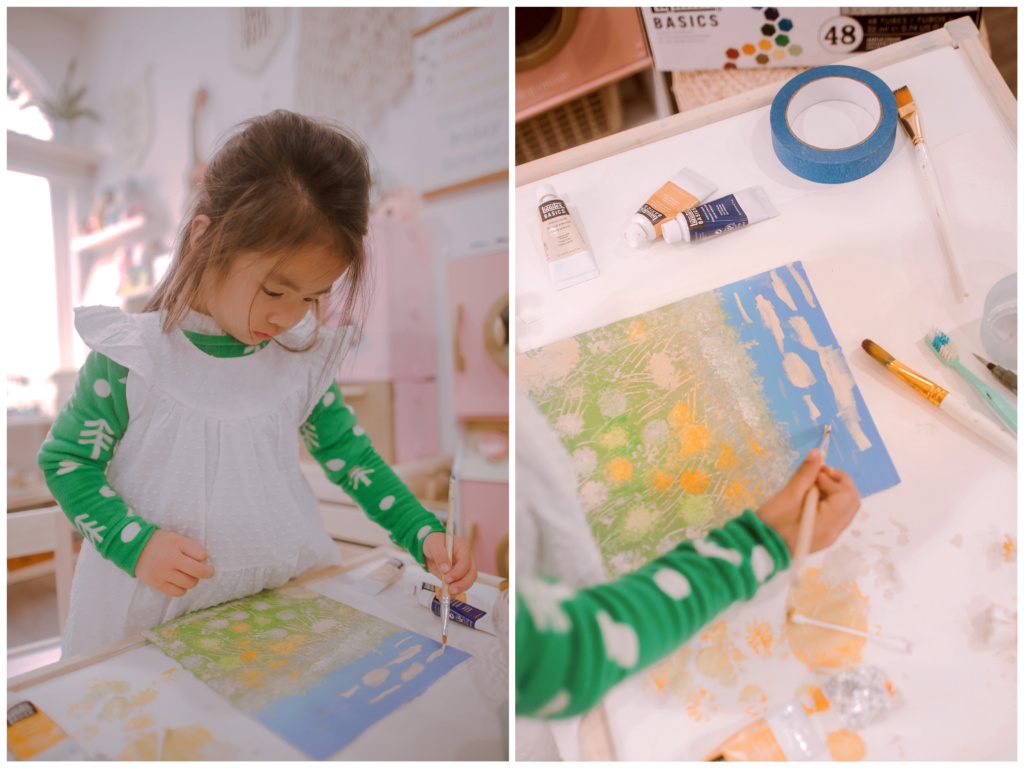
NyNy is pretty comfortable with a more difficult subject that requires meticulous fine motor skills – that is embroidering. I let her use round needle and embroidery hoop. We can sit side by side and embroider together for up to an hour.
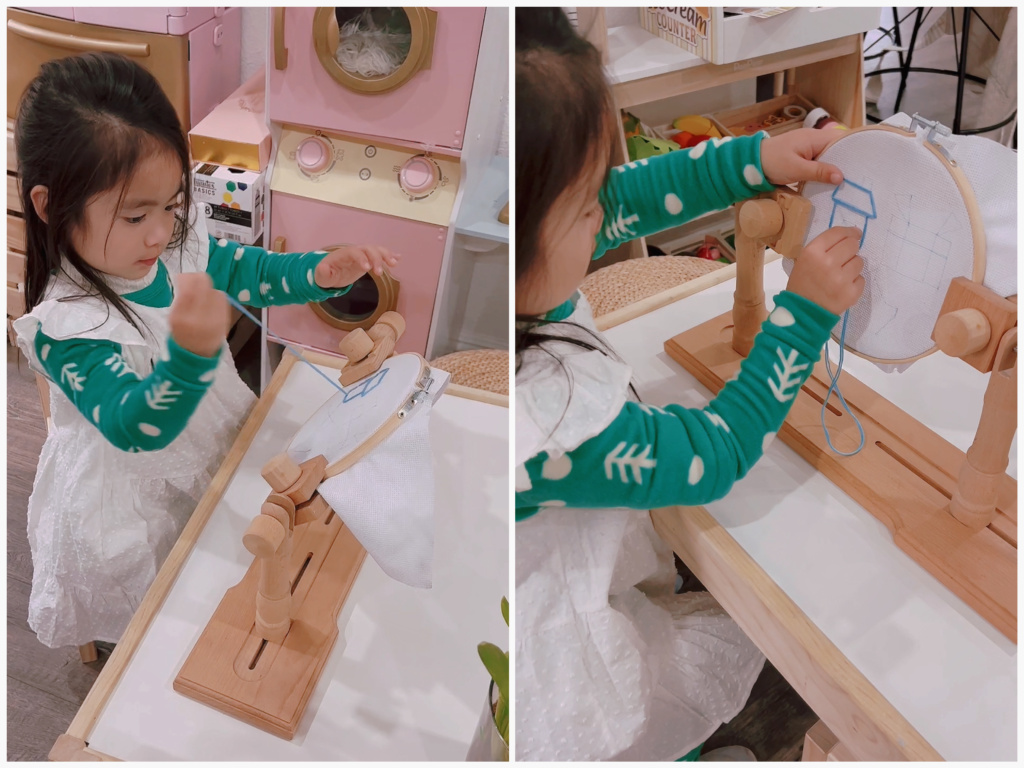
Other fine motor skill activities include carrying trays, pouring dry goods or liquids, threading beads, sweeping up spills, washing their hands, and gardening.
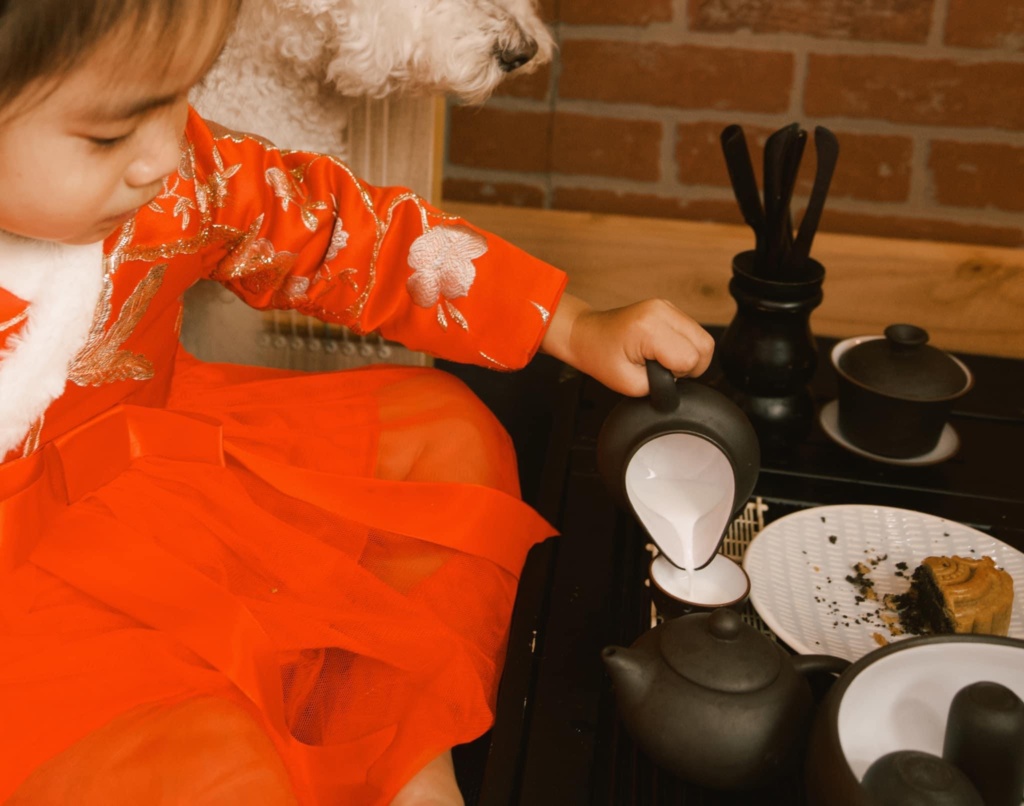
Also, there are many open-ended toy options that support the development of fine motor skills including wooden blocks, wooden puzzles, and wooden geoboards. Our favorite is the Panda Brothers’ Wooden GeoBoard with 64 semi-embedded nails on a board measuring 8×8 inches, 30 double-sided pattern cards, and colorful rubber bands; it is a great learning tool to teach NyNy about geometric shapes and patterns and to build anything that she can imagine.
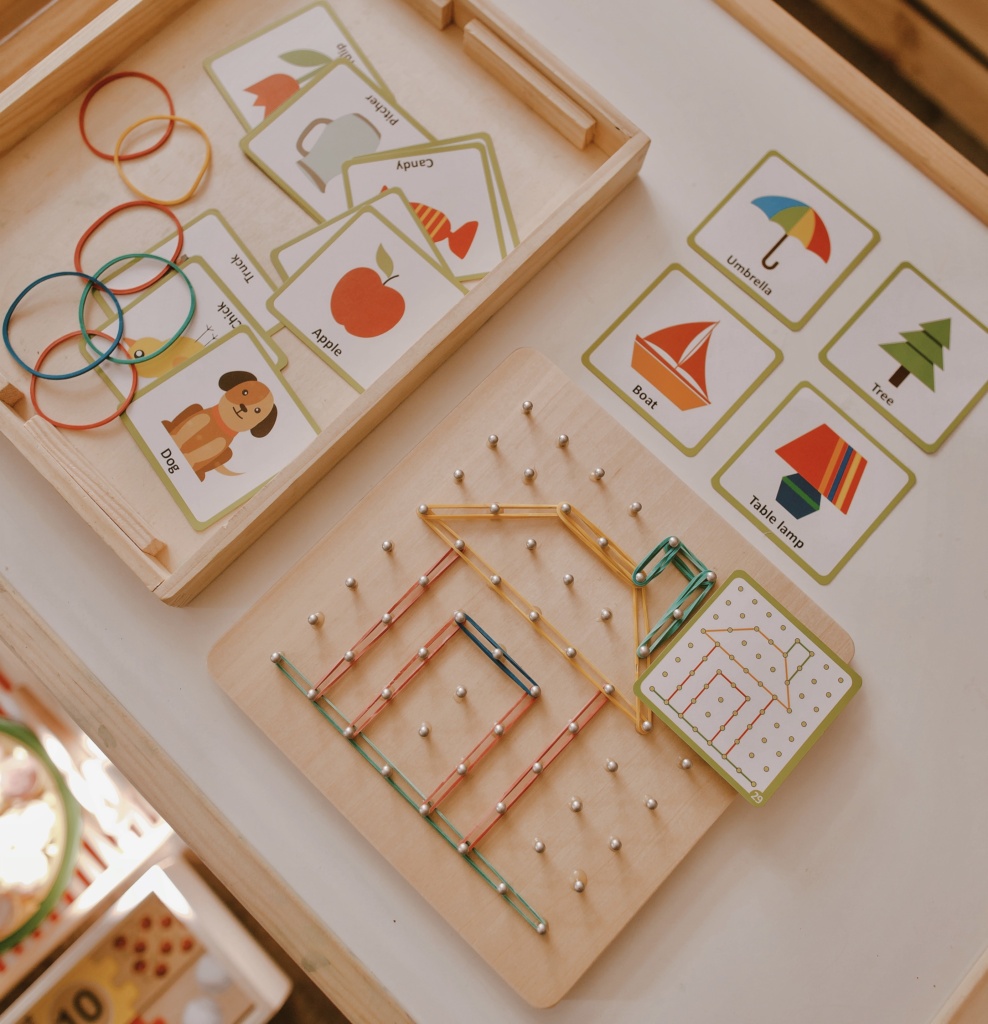
Gross Motor Skills
Gross motor skills are large coordinated muscle movements, such as climbing, walking, or jumping. To help NyNy improve her gross motor skills, we introduced her to rollerblading and figure skating.
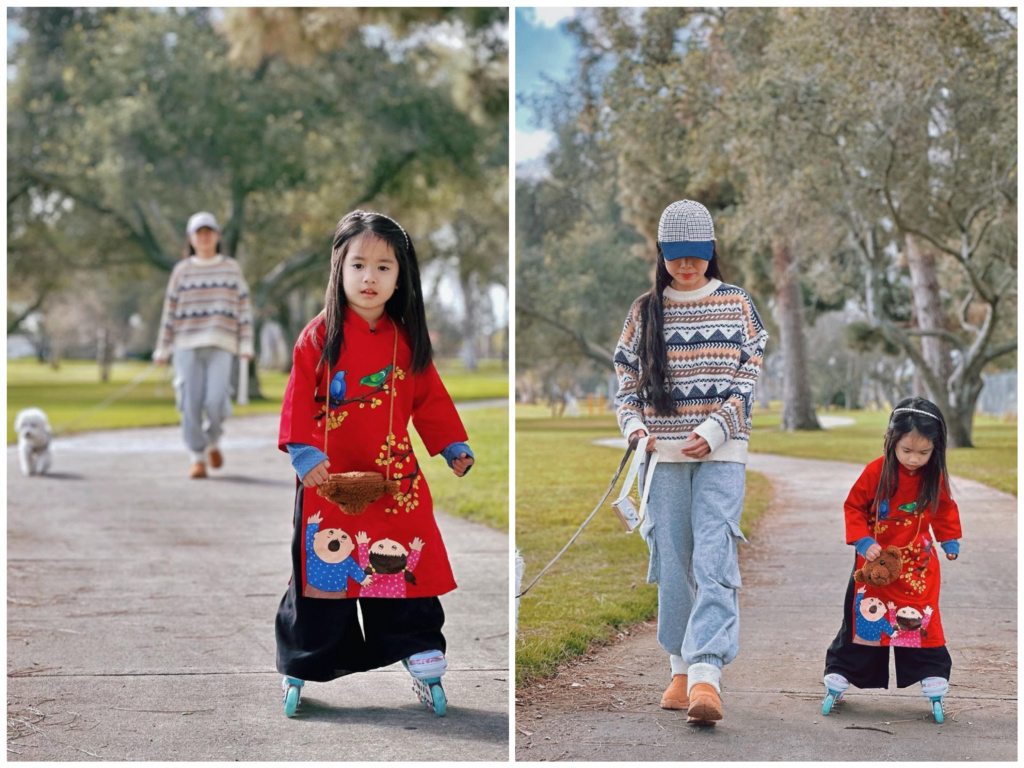
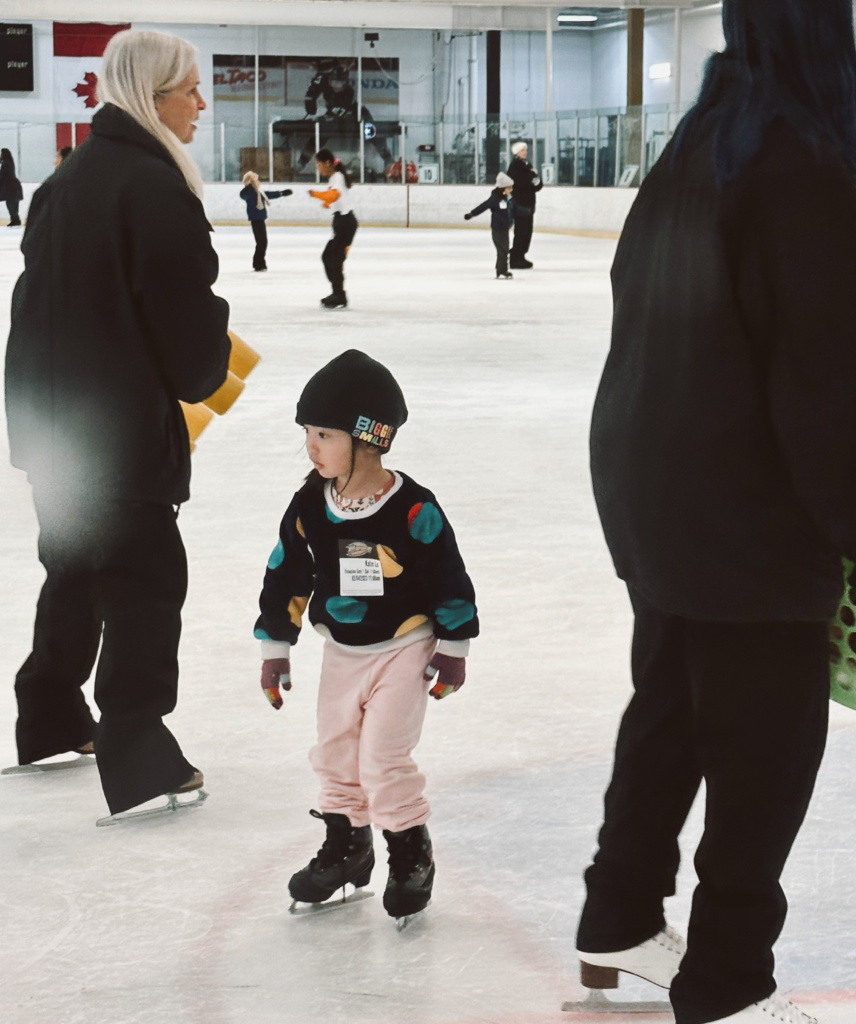
Caring for the self
Children enjoy the sense of confidence and independence of being able to perform self-care tasks. These tasks include eating on their own, folding clothes, hand washing, and dressing themselves.
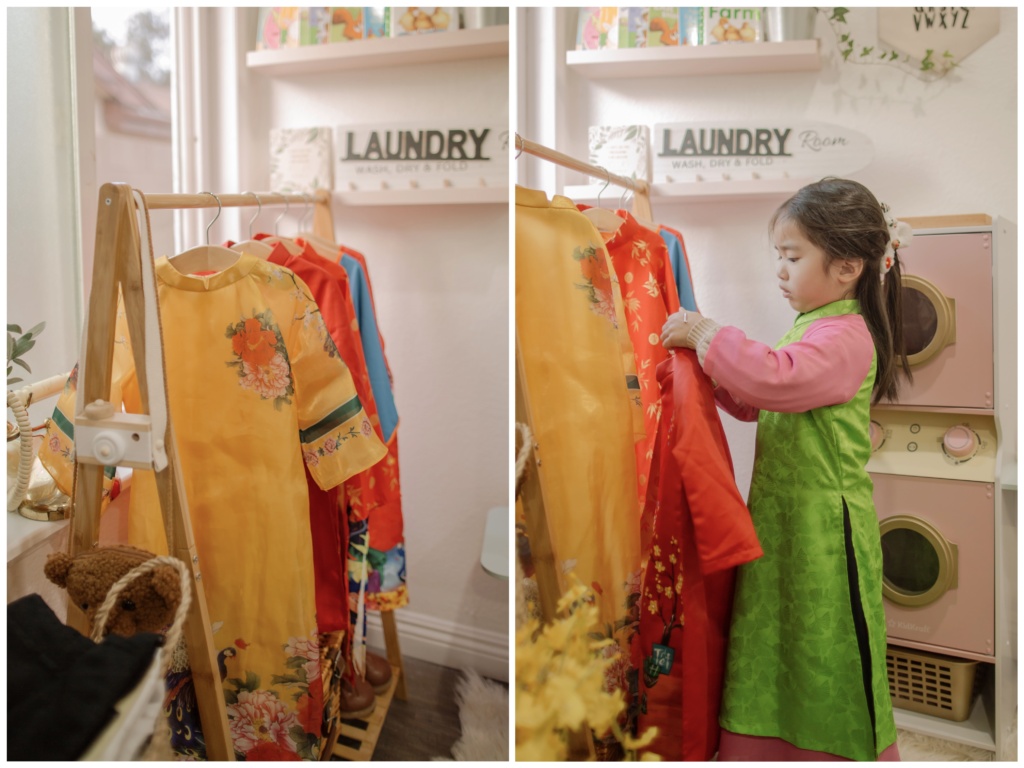
Caring for the Environment
Care of environment activities teach children to care for and respect their home environment, classroom, and the outdoors. The activities that we do at home with NyNy to teach her to care for her surrounding environment include cleaning a spill, throwing away trash, unloading the dishwasher, unloading groceries, and taking care of pets.
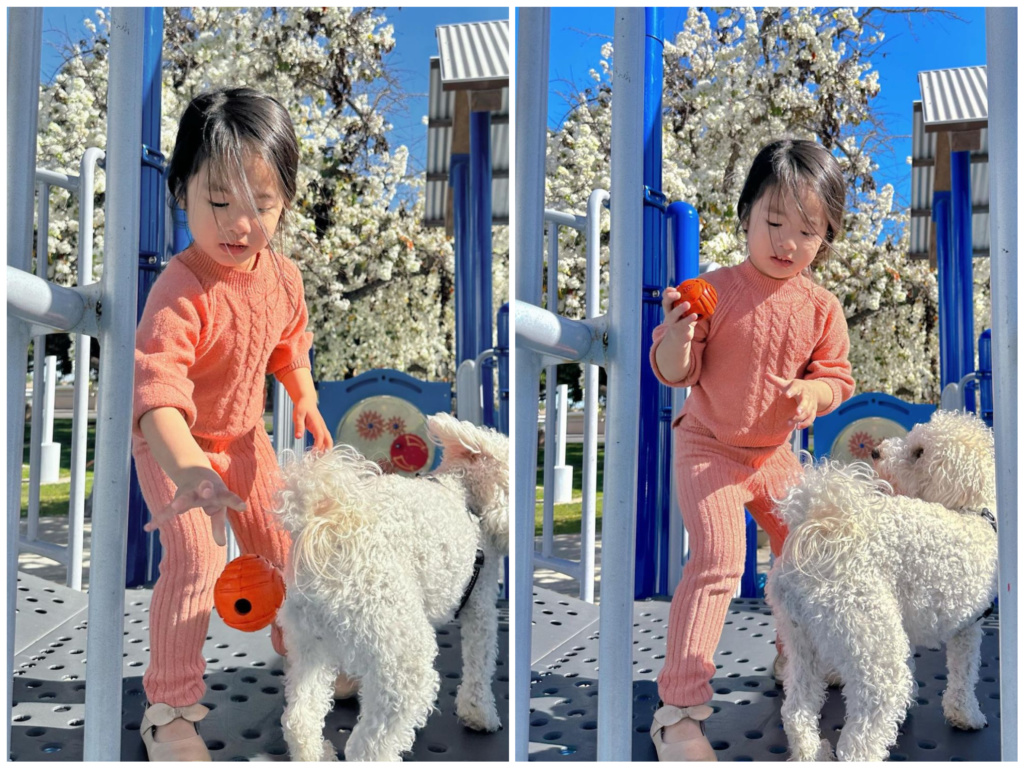
Grace and Courtesy
Grace and courtesy activities help acclimate young children to social customs and manners. Grace and courtesy lessons include greeting people, saying “Please” and “Thank you”, learning to wait to be served at the table, and offering help to others.
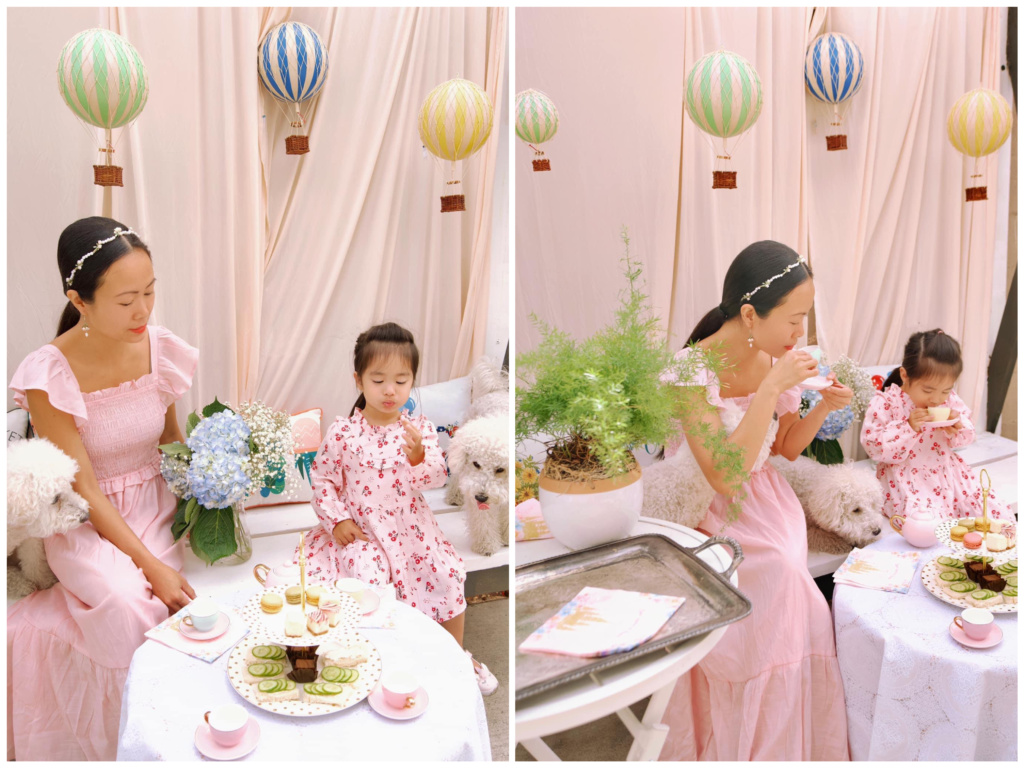
***In short, practical life activities are reality-based; Concentration in these types of activities allows children to teach themselves how to adapt in society, as well as learn coordination of movement and develop a sense of order. The most important attribute learned through these activities is the knowledge of how to be a purposeful and functional member of society.
Sensory Activities
Sensorial activities are designed to reinforce the five primary senses (touch, taste, smell, sight, and hearing). Sensory play activities like painting and playing musical instruments stimulates the mind, builds nerve connections in the brain, and helps kids retain information better. Sensory play should be part of your everyday experiences and learning opportunities for children. Here are some ways that we use at home to engage NyNy’s sensory systems through play.
Playing music
“Music can touch us in a way that nothing else can. No better gift can we give to the children than to open this door for them.” -Maria Montessori
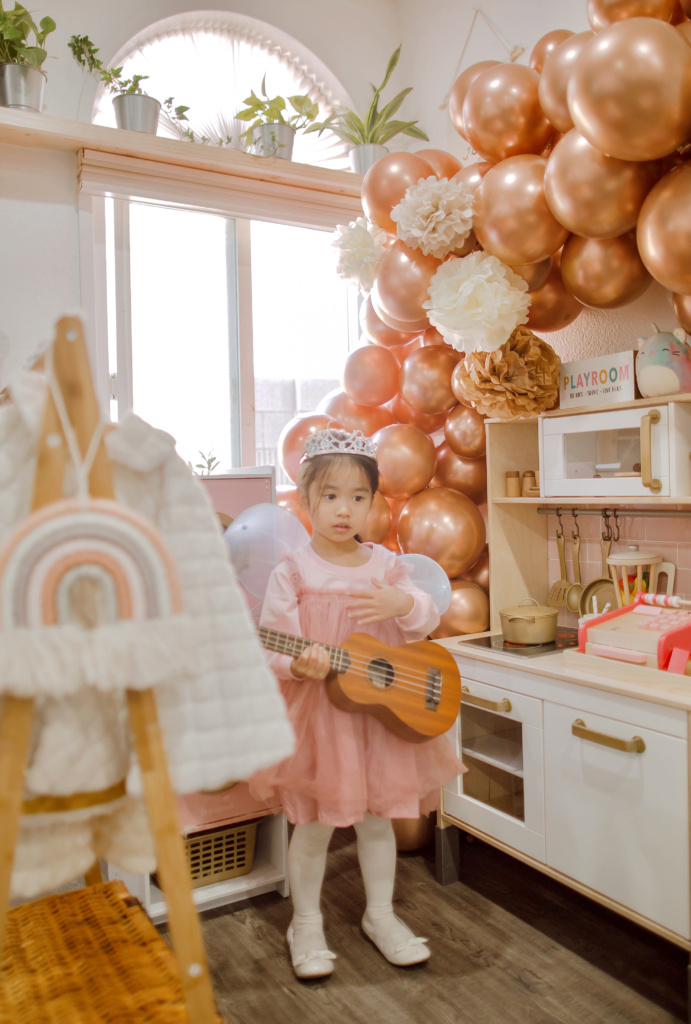
Playing and making music is a multi-sensory experience supporting language development, social-emotional regulation, fine motor skills (i.e., finger play songs), or gross motor skills (i.e., if dancing is involved.)
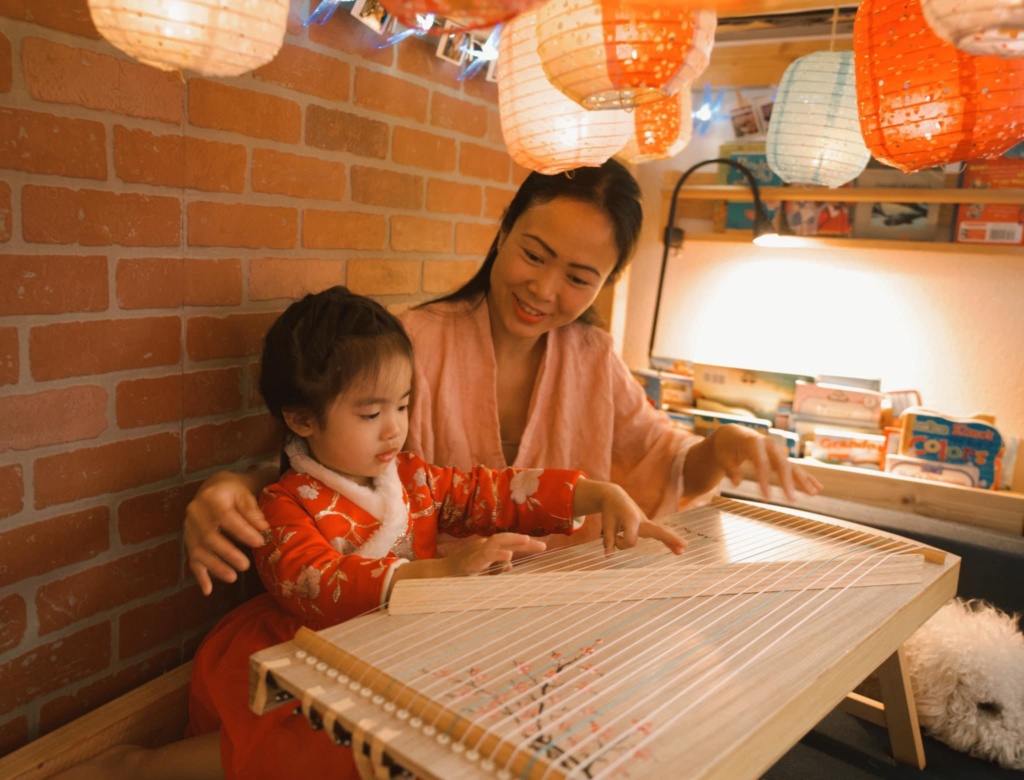
I created a music corner for NyNy with all real musical instruments including a digital piano, a mini guzheng, and an ukelele. Our music corner is actually the centerpiece of our Montessori playroom. This is where we spend most of our time creating music and just relaxing.
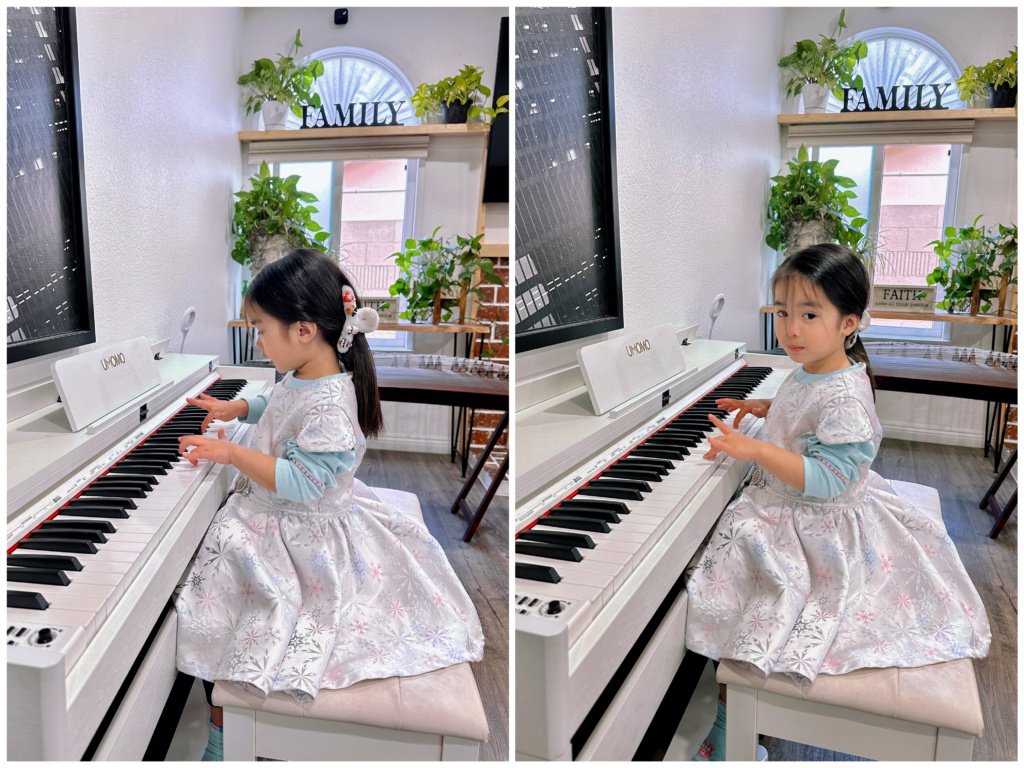
A well-planned music corner provide kids with some unstructured learning. Unstructured learning happens when children are simply invited to play, listen, and create without an agenda or learning outcome. These times of singing and playing just for the joy of music can be some of the most special moments a family can have!
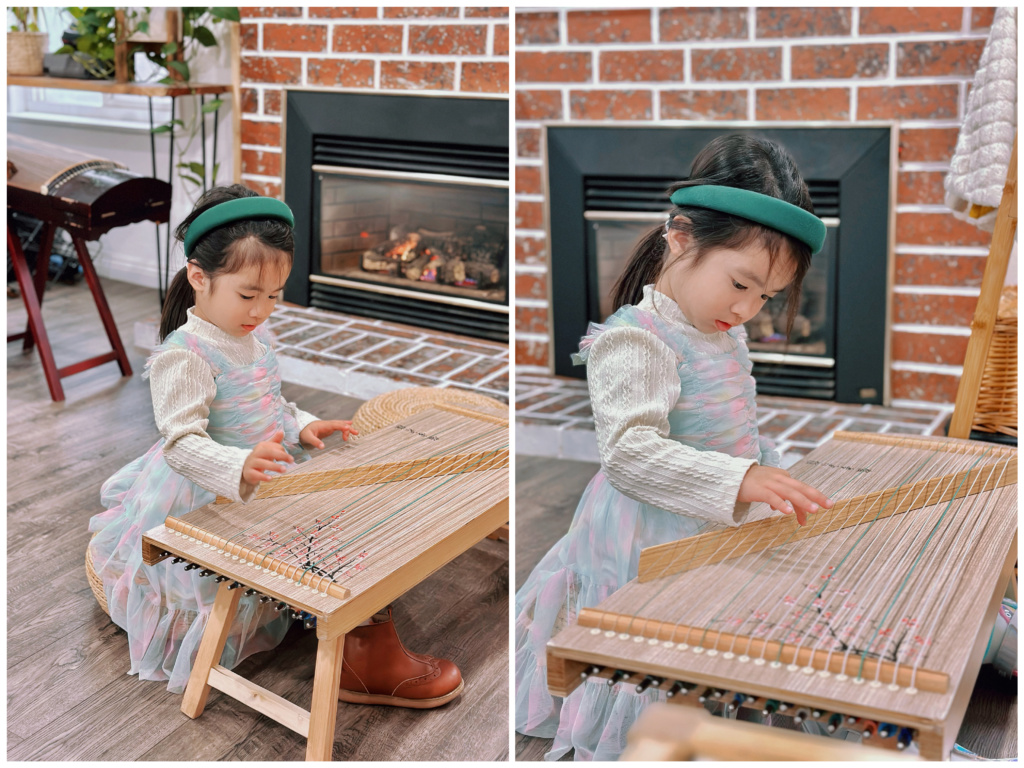
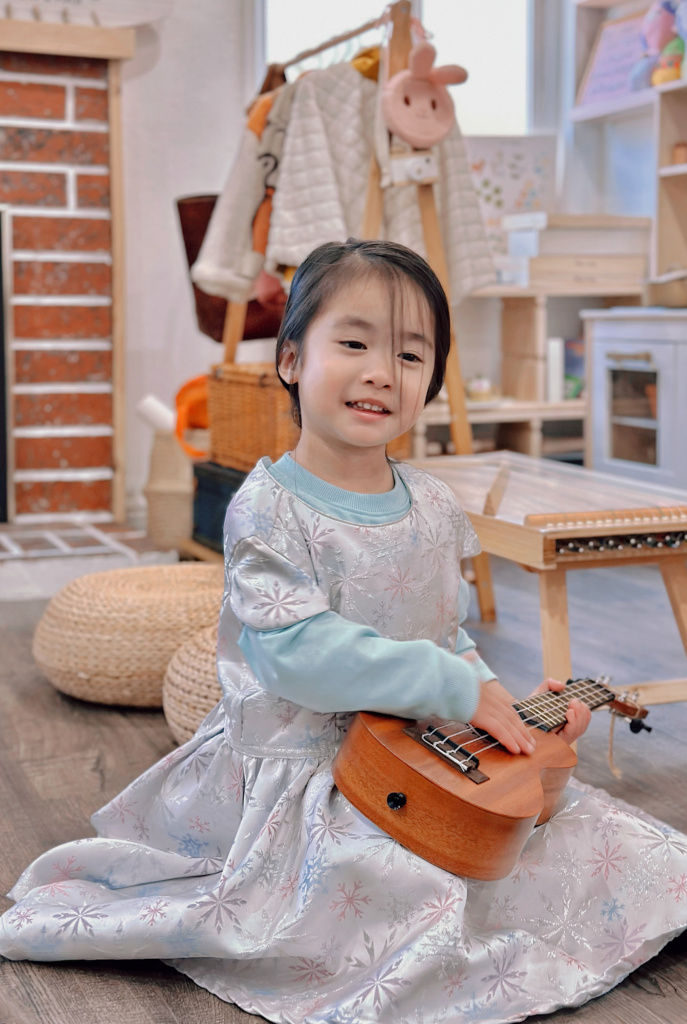
Art sensory experiences
Art experiences offer a variety of sensory experiences just by exploring different mediums such as crayons, paint, colored pencils, pastels, watercolor, and markers.
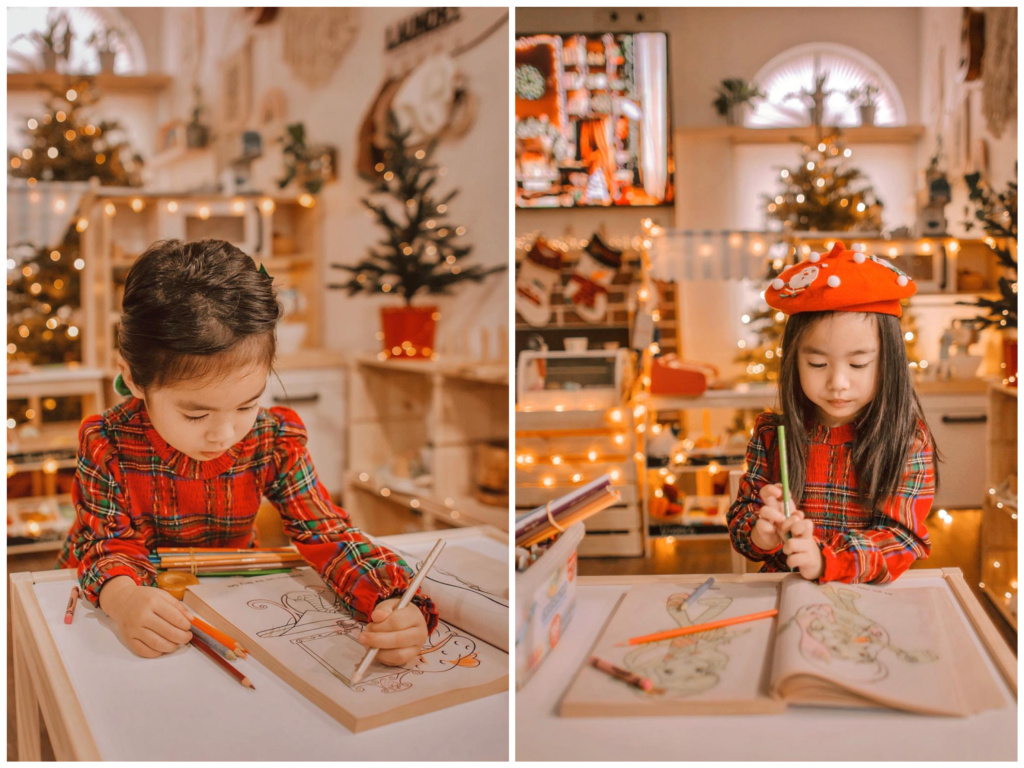
Children are typically intrigued by the colors and the textures. Children can explore cause and effect with color mixing, experiment with different brush strokes, and express creativity.
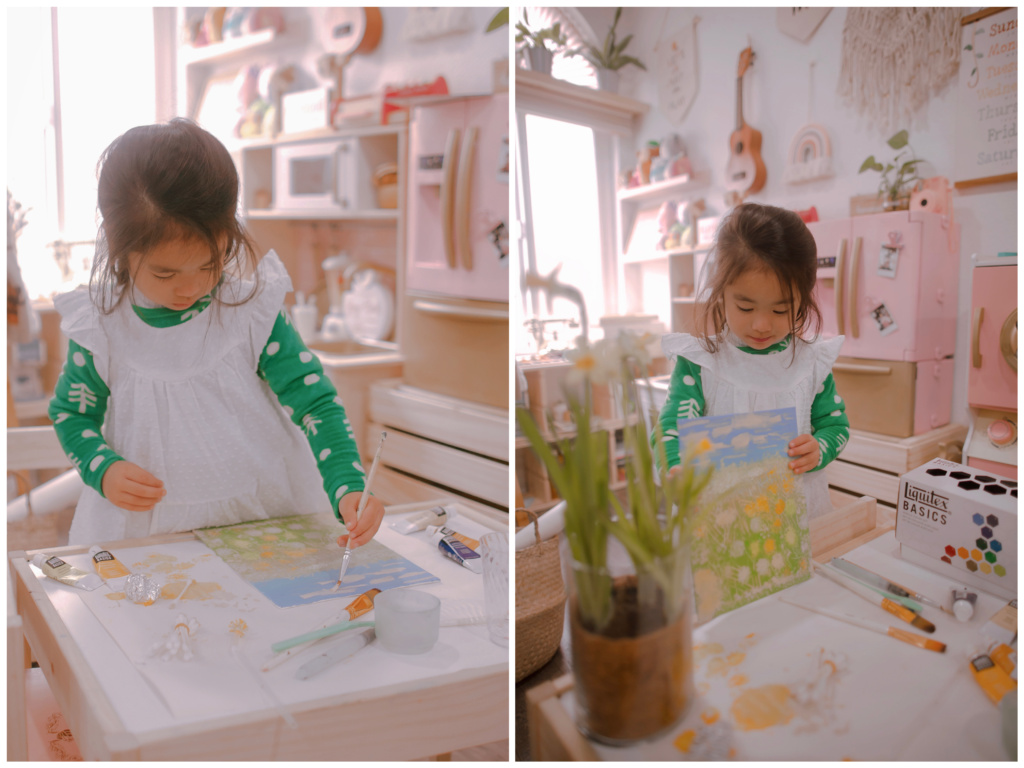
You truly don’t need to come up with a super-creative art project idea every day, have any artistic ability whatsoever because Montessori is all about process art – where the focus is on the experience of creating something – rather than product art, where the emphasis is on the end result. Montessori art teaches children how to think creatively and express themselves artistically.
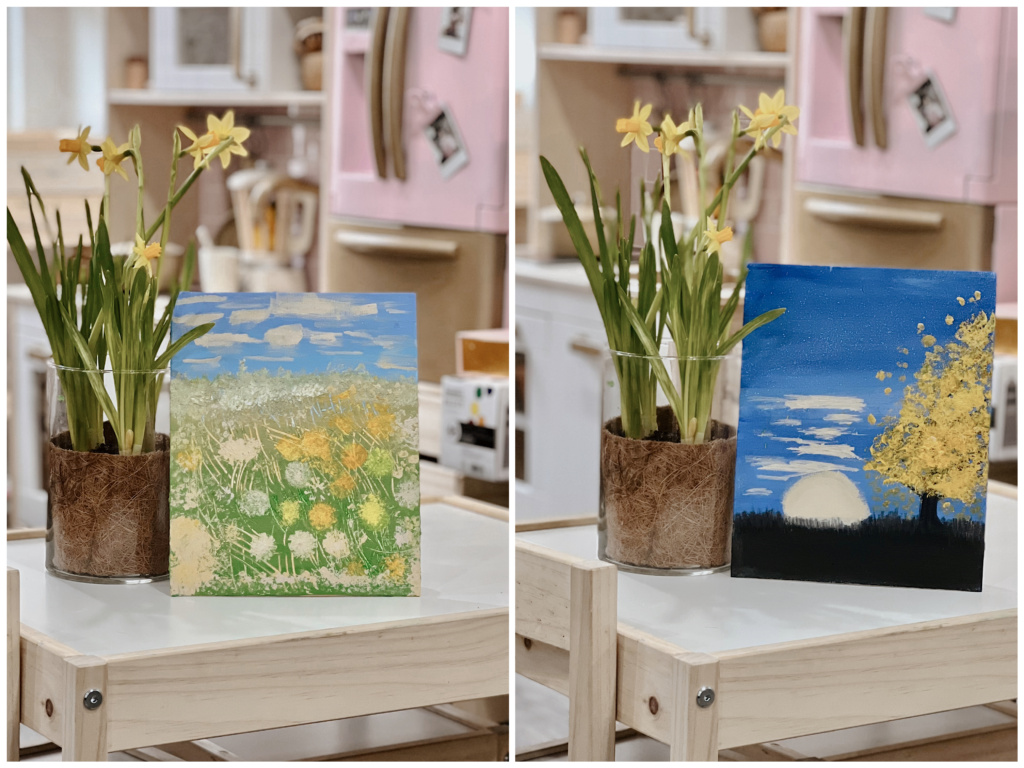
Some of other art sensory activities including stickers, wooden stamps, chalkboard, bead work, baking, and play dough.
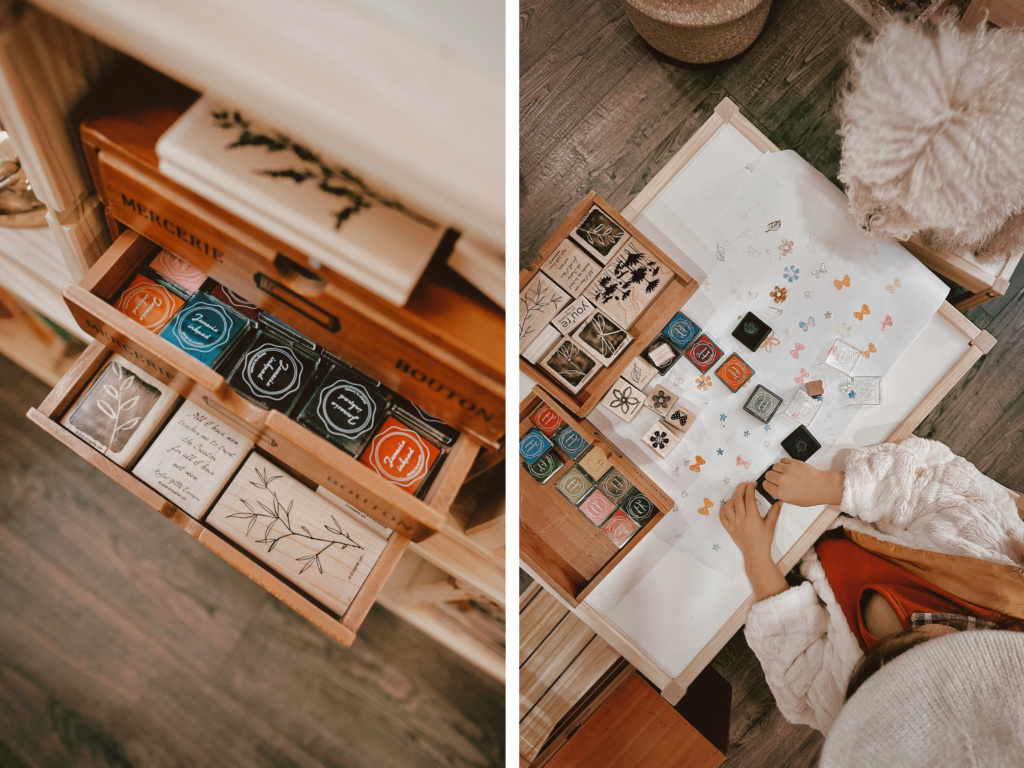
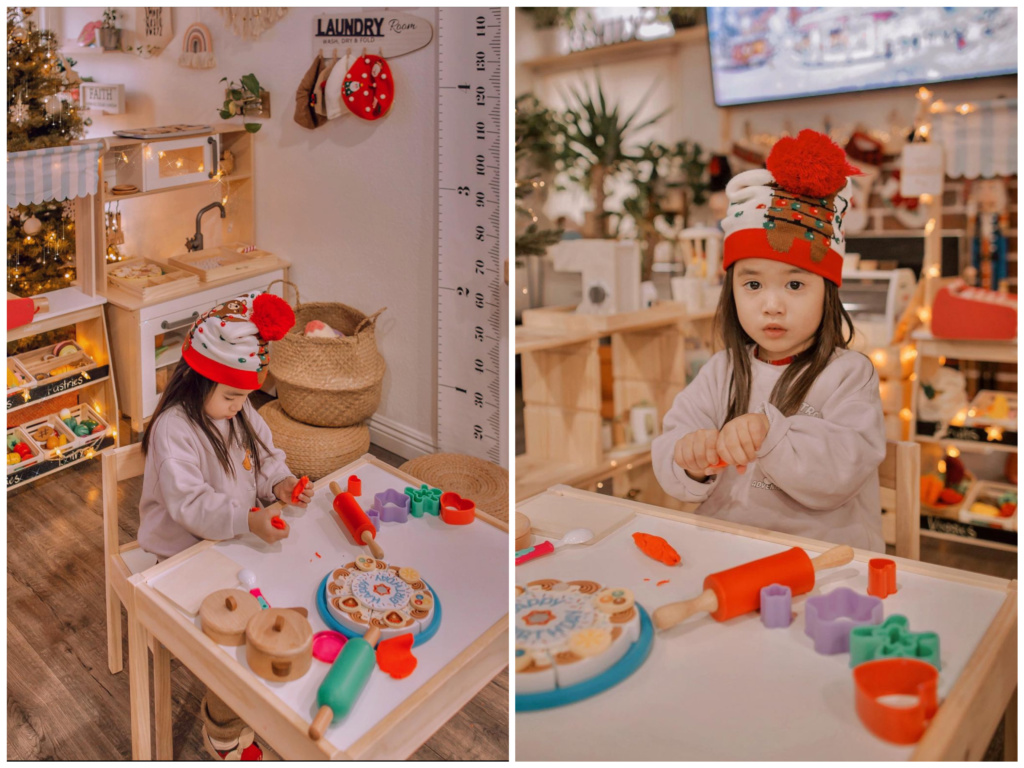
Multi-sensory Learning Outdoor
Think of an early morning walk through a botanical garden or an apple orchard. While it may be a relaxing moment for you, it’s a huge learning moment for your child. Your child sees the green color, hears the birds’ chirping, feels the breeze, smells the fresh earthiness around them, and tastes the freshness of fruits picked from trees. This combination of sensory input tells them a lot about nature, and because it’s all sensory information, they retain it well.
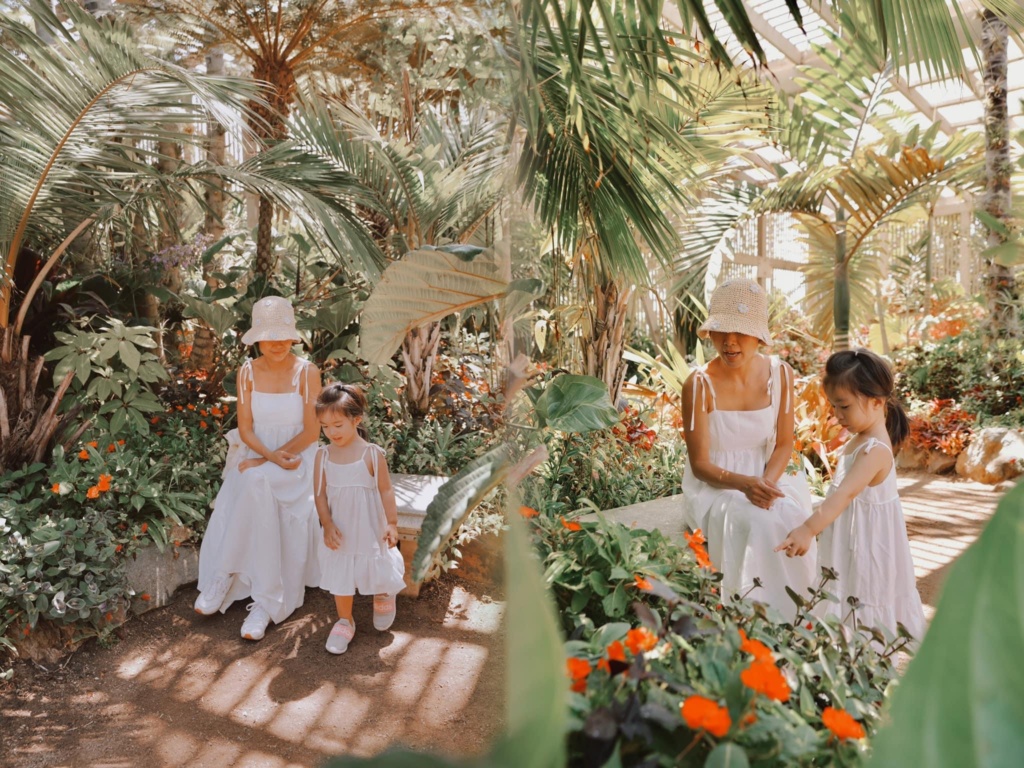
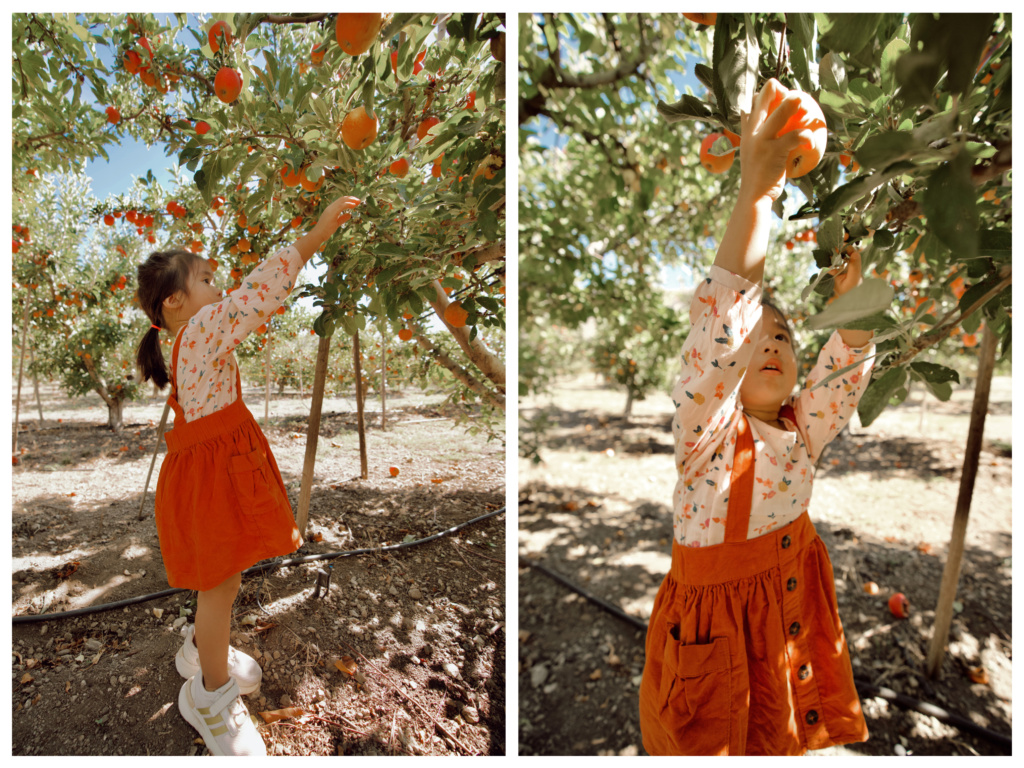
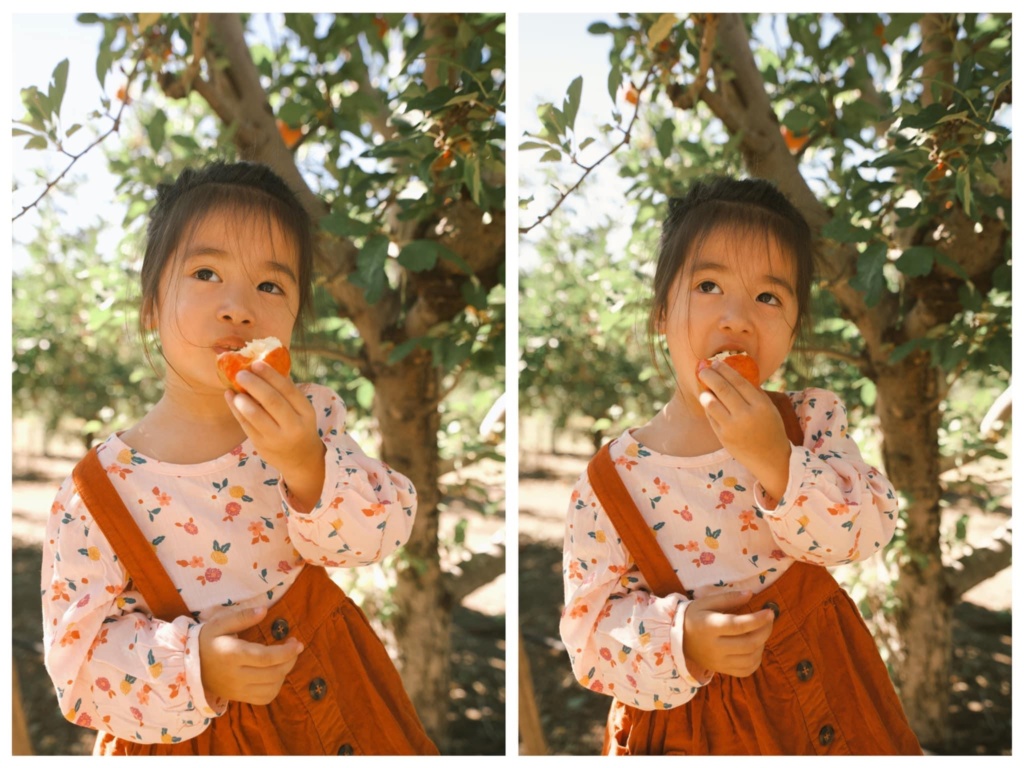
People learn best in nature! Young children are amazing learners on their own. They’re built to take in information, process it, and are constantly curious and hungry for more. Nature provides an endless buffet of sights, sounds, smells, sensations, and tastes for a curious toddler.
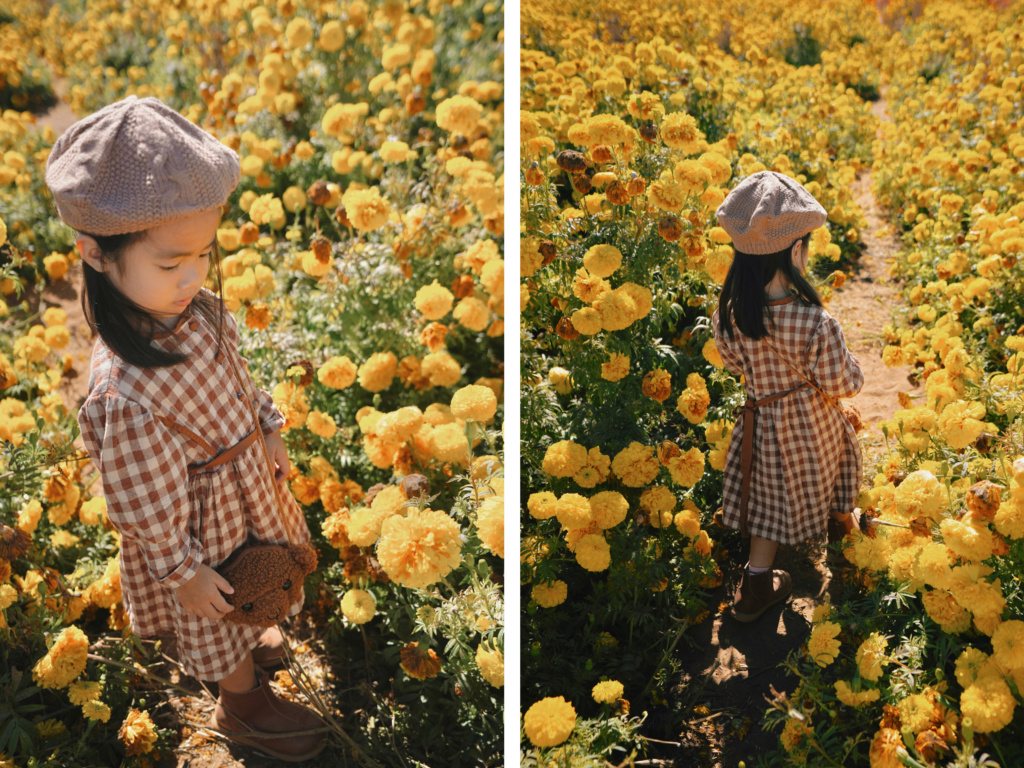
Some possible locations for outdoor sensory play are local parks, fruit orchards, flowers fields, botanical gardens, backyards, nature trails, and beaches.
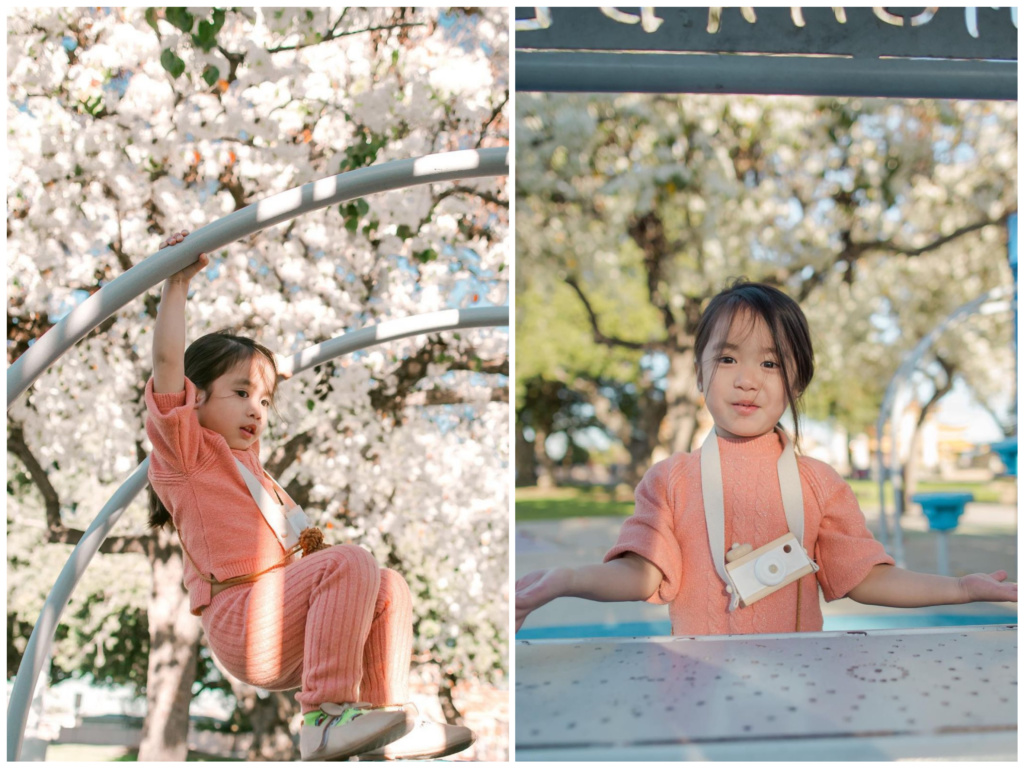
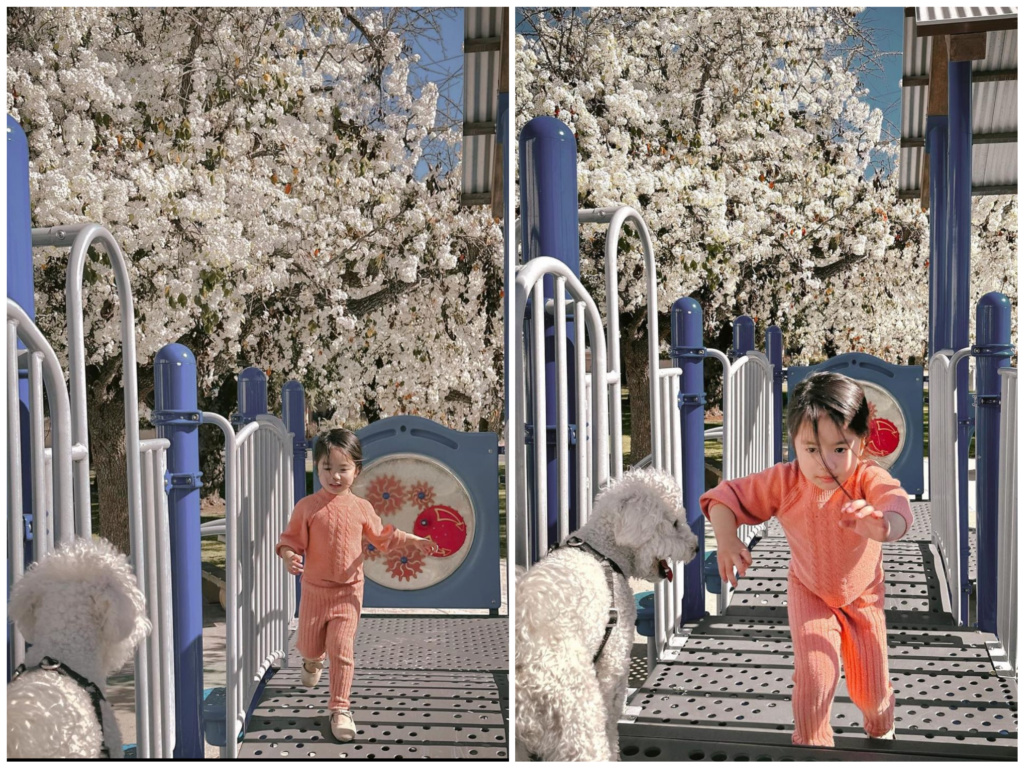
Language and Math
Young children have a phenomenal ability to absorb language. They automatically absorb it from their environment. We make discovering language become interesting and fun for NyNy with open-ended wooden toys including the Wooden ABC puzzle and the Wooden Alphabet Tracing Board.
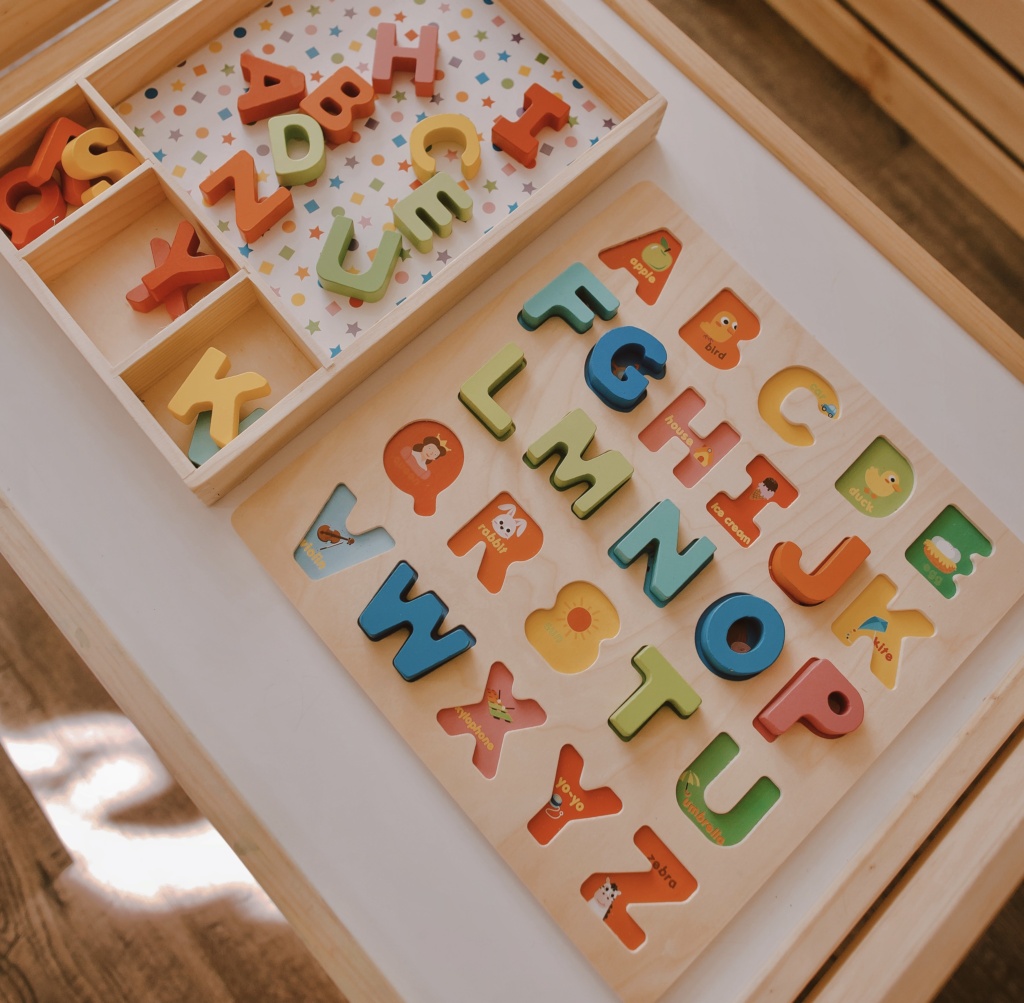
We prefer the tracing board to just handing NyNy a pencil. If you give your child a pencil and a paper, he/she will just doodle some fun shapes on paper. The wooden tracing board with finely engraved groove design help kids to train their hand movement and develop visual memories until they can hold a pencil properly. Tracing with a wooden stylus can both enhance letter recognition and help children build their writing muscle memory. It’s an ideal tool for toddlers to learn to write ABC.
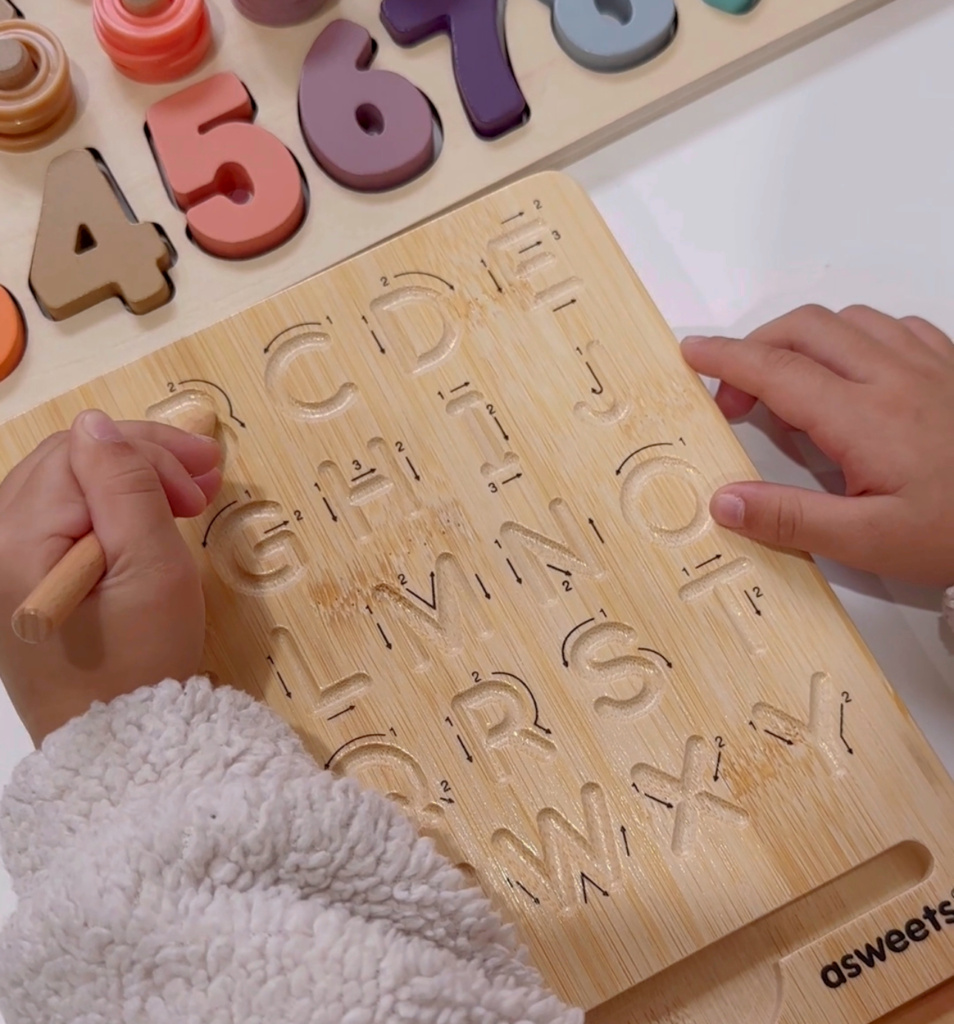
The Montessori material for Math introduces the child to associate quantity and its symbols. The Montessori Math materials are designed to give the child a sound understanding of numbers and their relationship. This work is always introduced in a simple and sensorial way so that the child can see, hold, and feel the number or quantity and gradually be led to an abstract understanding.
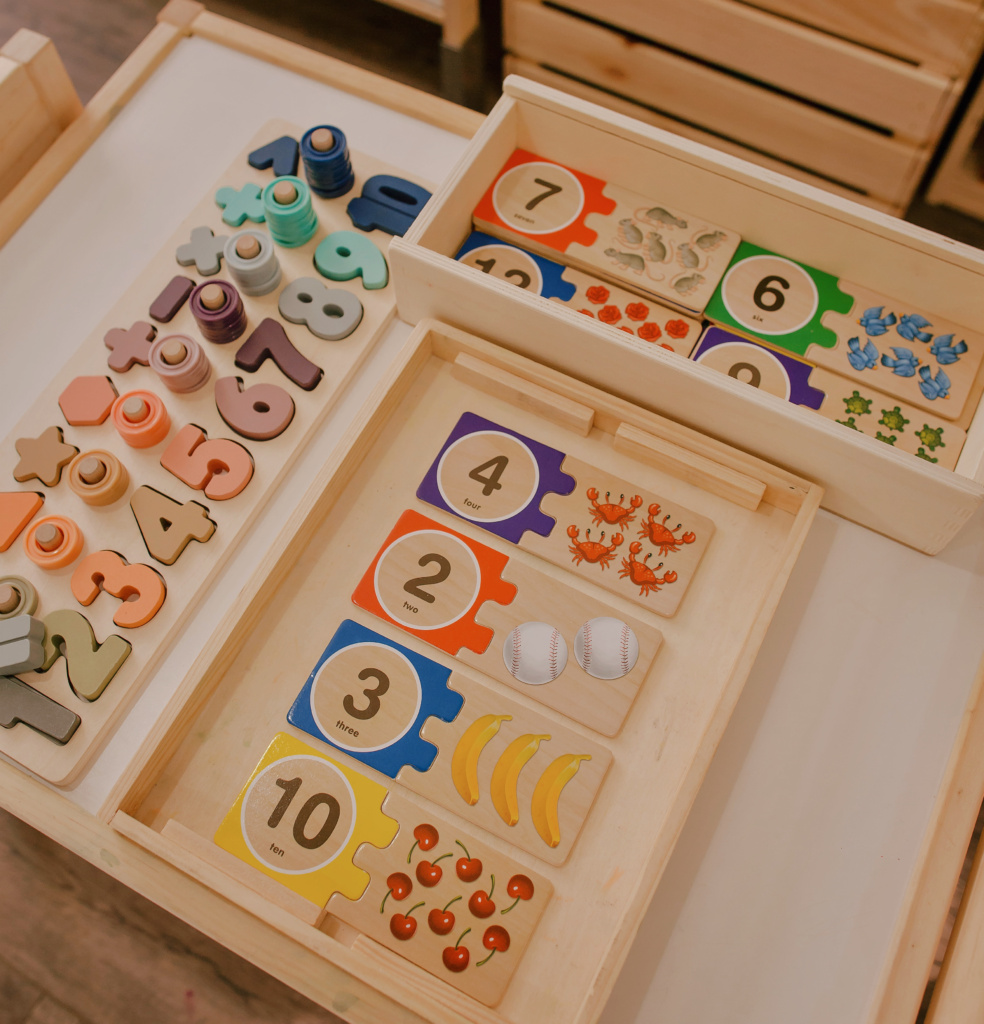
One of our favorite wooden toys for introducing NyNy to Math concepts is the wooden count sort stacking tower with colorful number-shaped blocks and rings. It offers many activities including sorting the rings according to colors, counting the pieces, and stacking the blocks. It’s good for developing early sorting skills, teaching colors and numbers, promoting hand-eye coordination, fine motor skills, and problem solving skills.
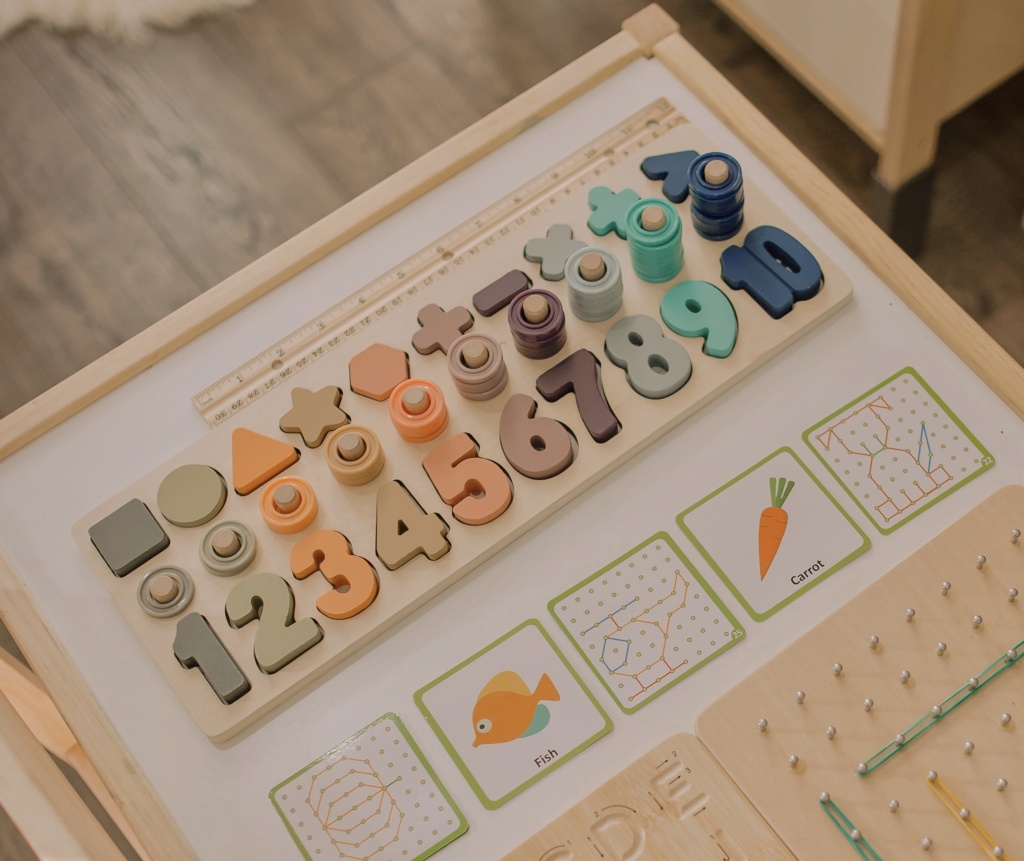
Melissa and Doug’s Wooden Number Puzzles help young kids get acquainted with numbers and counting. By matching these wooden puzzles in pairs kids can master numbers easily; groups of objects illustrate number 1-20 and the puzzles are self-correcting (each piece has only one match that fits) so children can play independently and learn at the same time. It’s great for helping kids learn matching and counting skills.
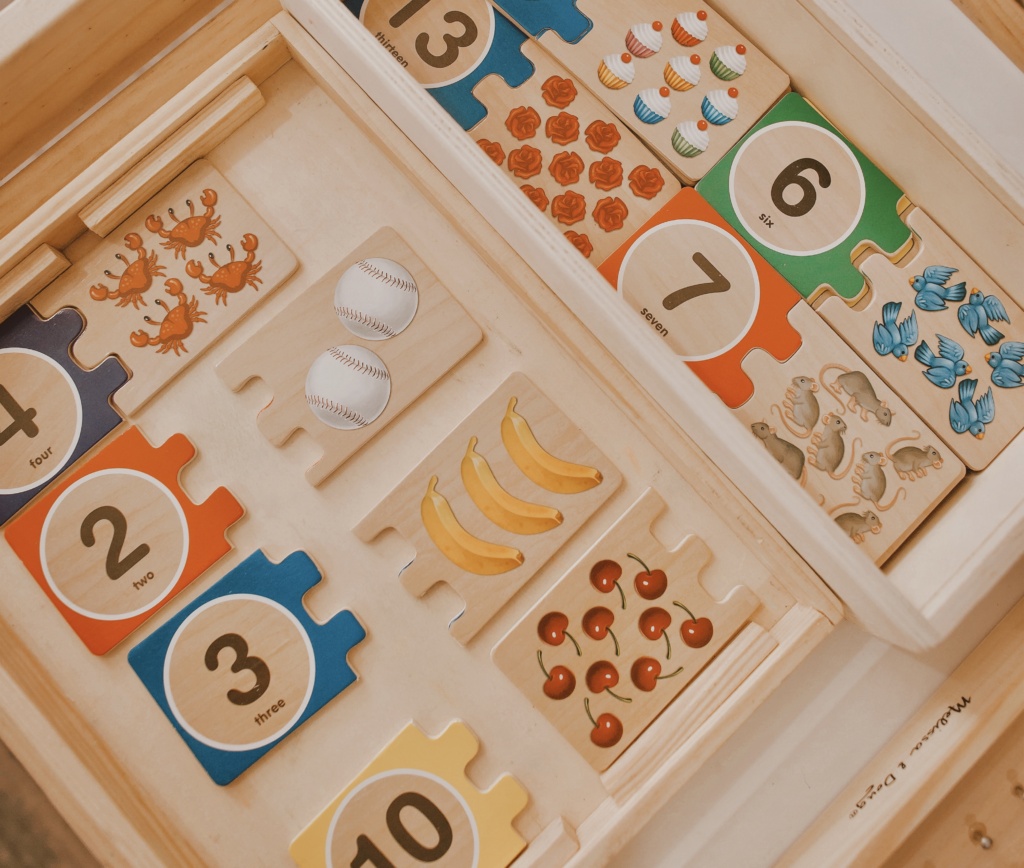
We also incorporate Math learning lessons in our pretend play. We set up a corner in NyNy’s playroom for a market stall with a cash register. This role play market stall encourages creative imagination, social and language development. This setup helps NyNy build up her confidence, communication, and problem-solving skills as she pretends to be a storekeeper, cashier, and future household shopper.
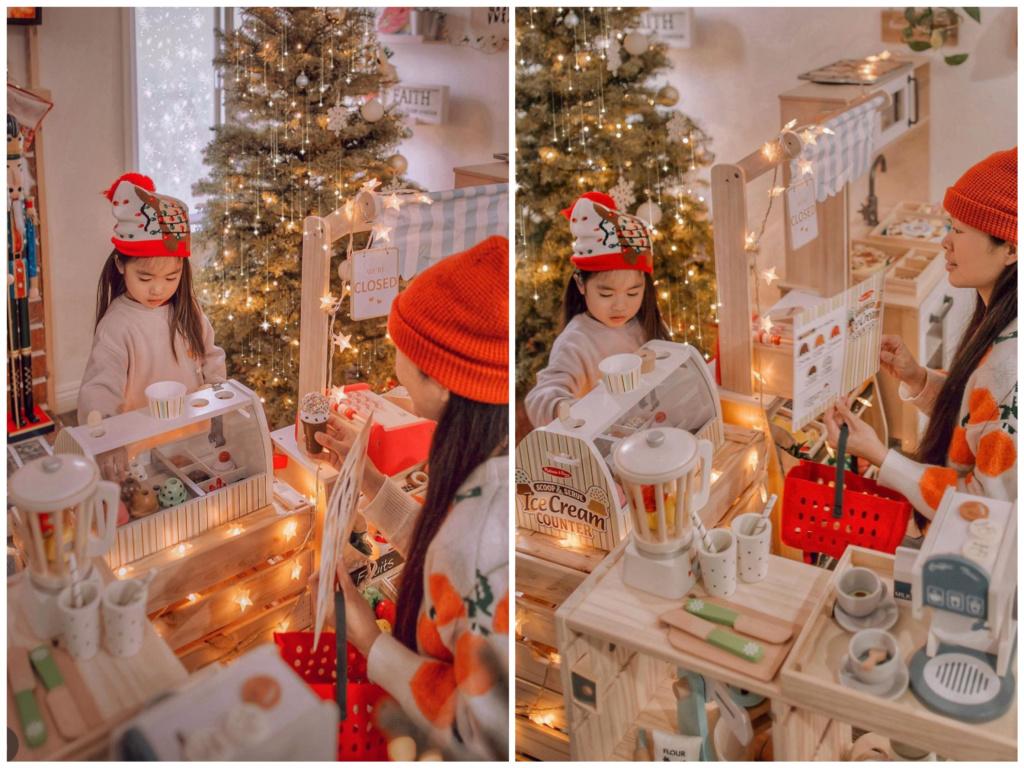
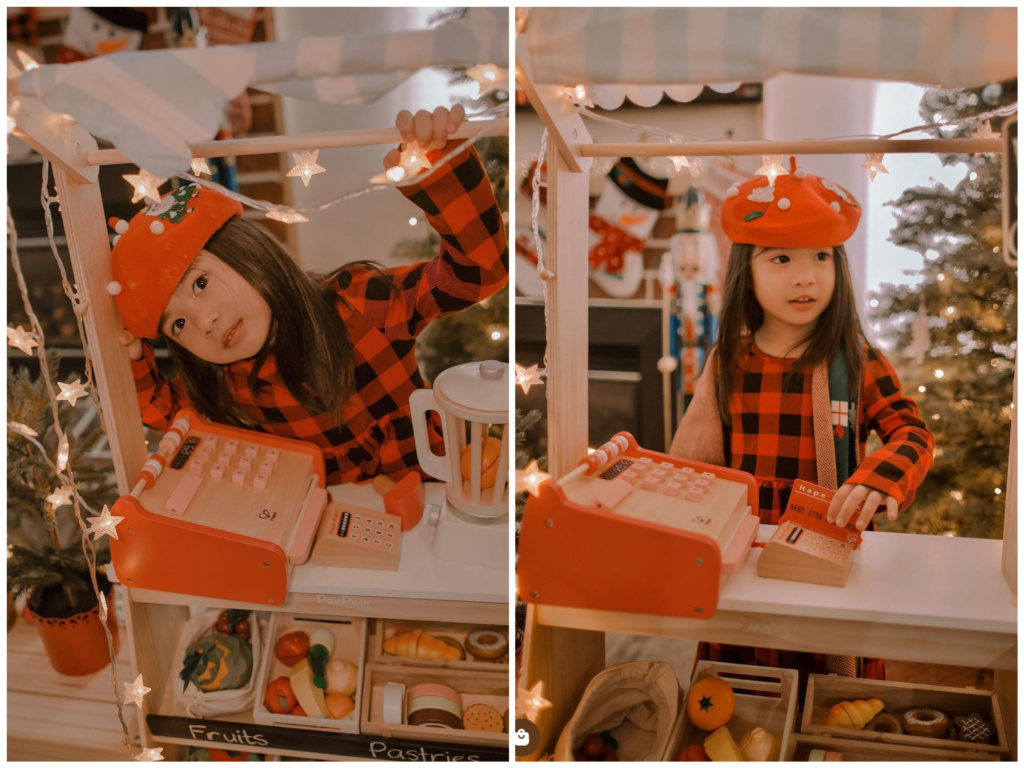
Our Wooden Cash Register from Hape is a great learning tool to teach NyNy about money value. This kind of pretend-play setup is a fun way for kids to practice organizational skills, social interaction, math, negotiating, and more. This marketplace setup effectively disguises learning as play!
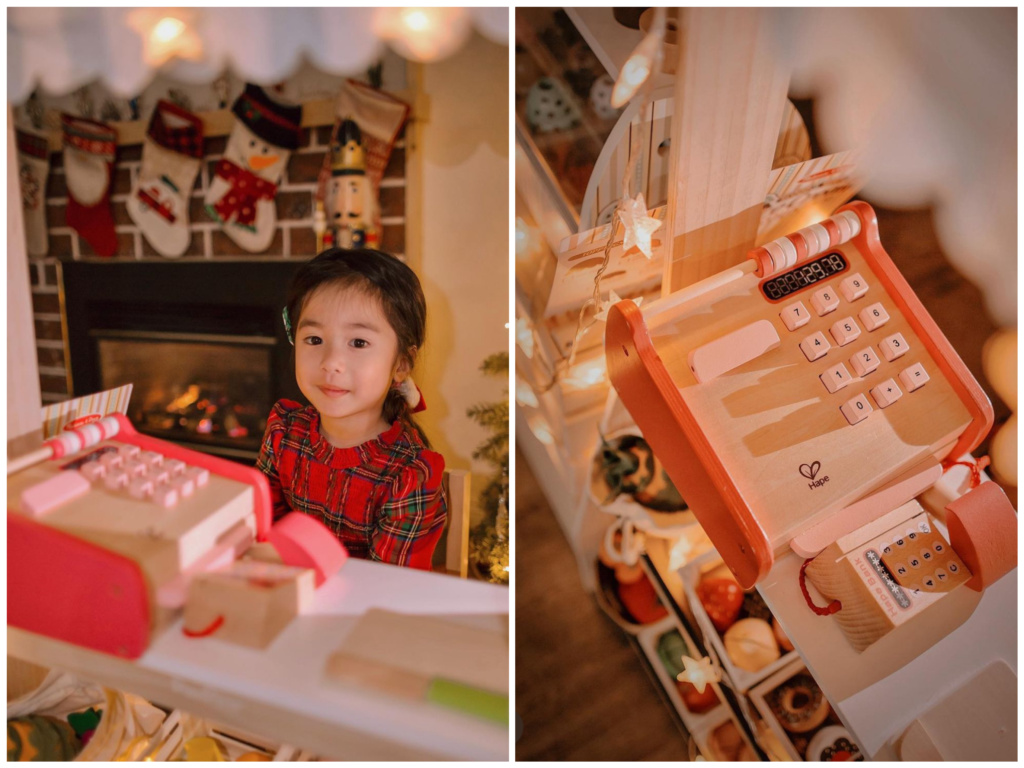
Cultural Studies
Cultural awareness and tradition play important roles in helping young children develop a positive sense of identity and build self-esteem. Studies show that cultural appreciation and awareness contribute to building a positive self-image. There are many ways that parents can teach their children about their own cultures including celebrating holidays and traditions.
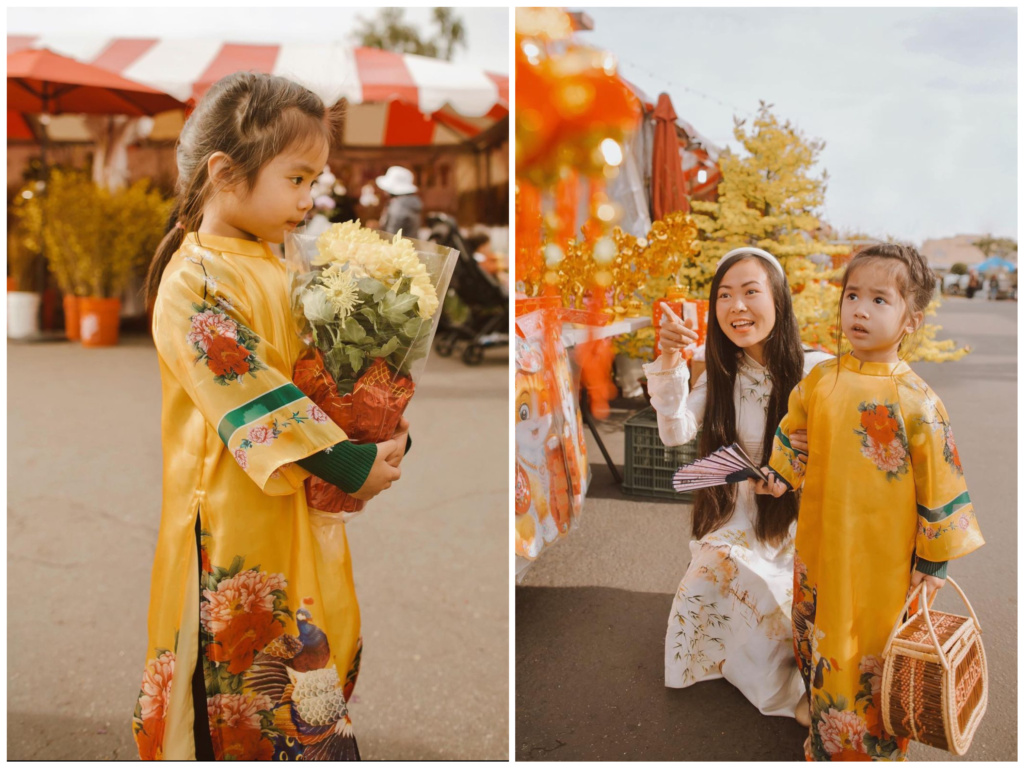
For Lunar New Year 2023, we took NyNy to the Flowers Market in Westminster and let her involve in some of Tet traditions including wearing Ao Dai, shopping for flowers, holding red envelopes, and participate in some traditional games.
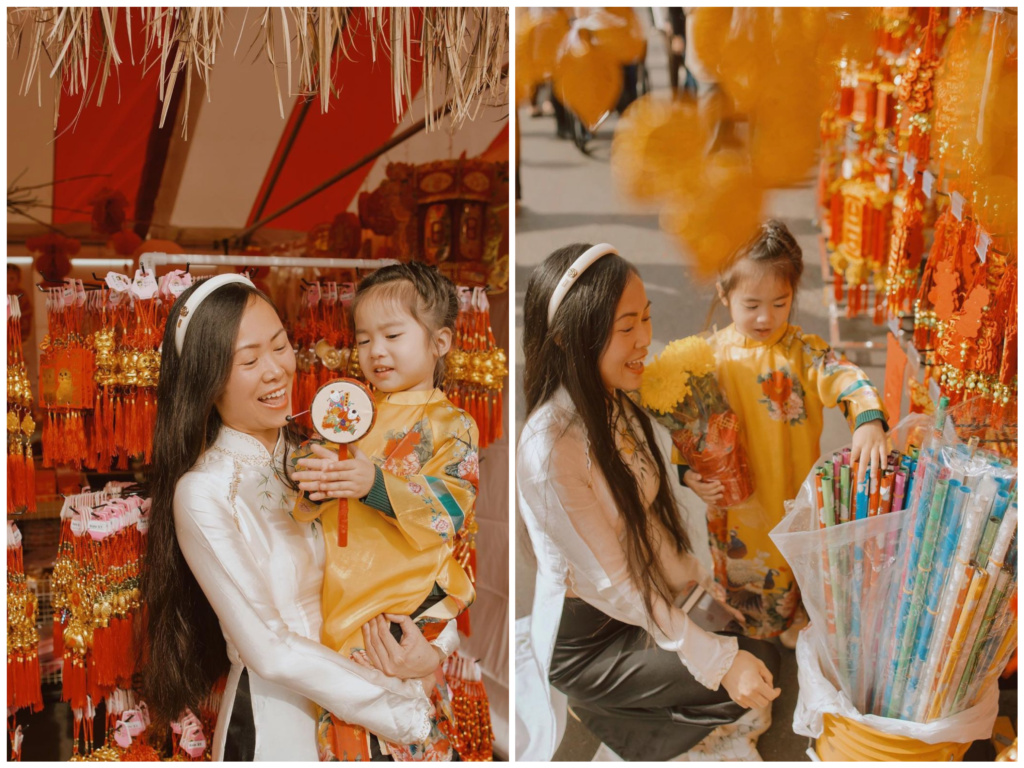
The importance of holidays and traditions spans across most cultures. Participating in the celebration of holidays creates a special experience that can help bond young children with their family’s cultural traditions
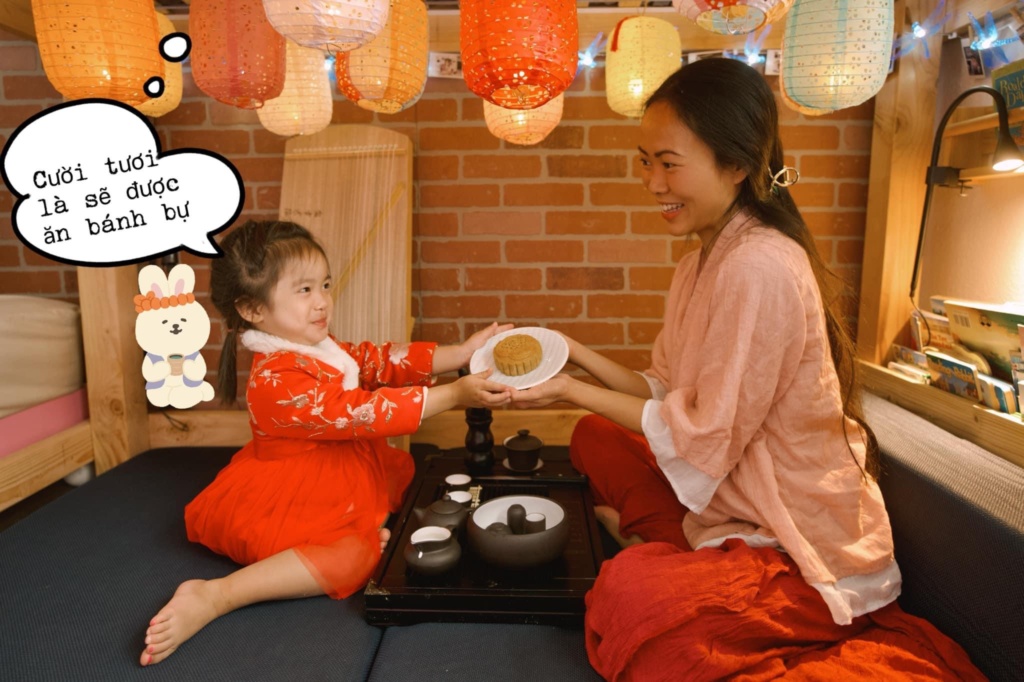
Children learn cultural awareness through hands-on activities, visual prompts, and culture-specific music, foods, and arts. For example for the Moon Festival 2022, I introduced NyNy to tea ceremony, showing her how to properly hold a cup of tea as well as pouring tea.
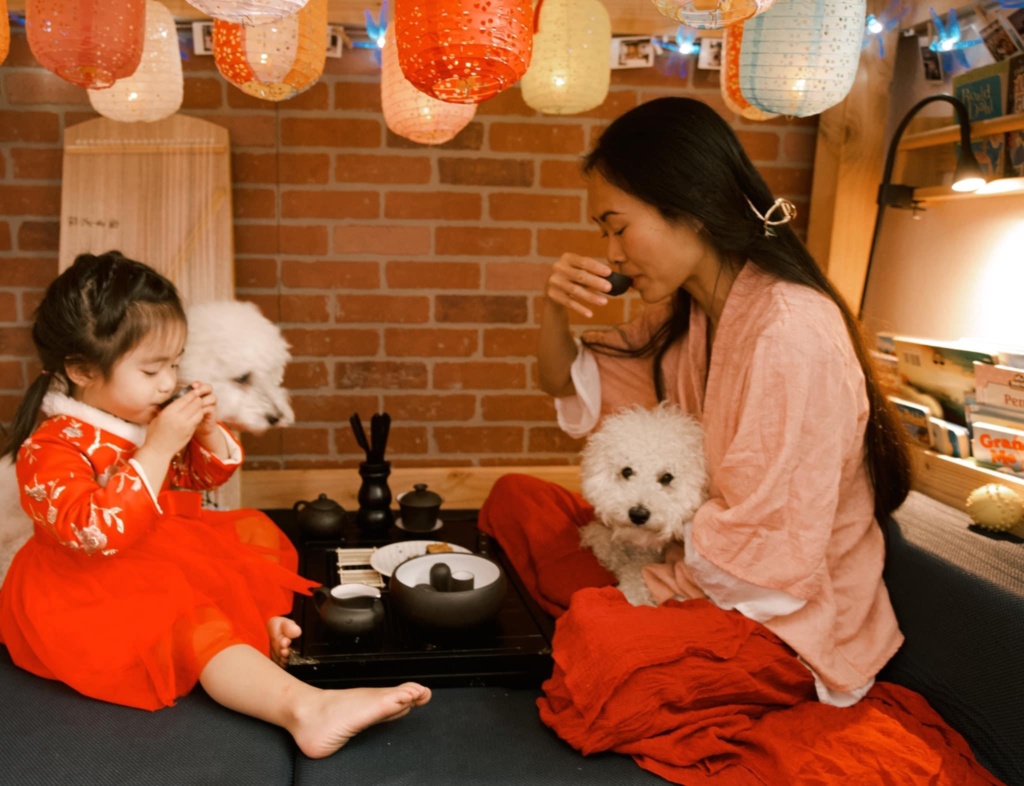
And don’t forget to have fun while naturally exposing your child to ethnic diversity.
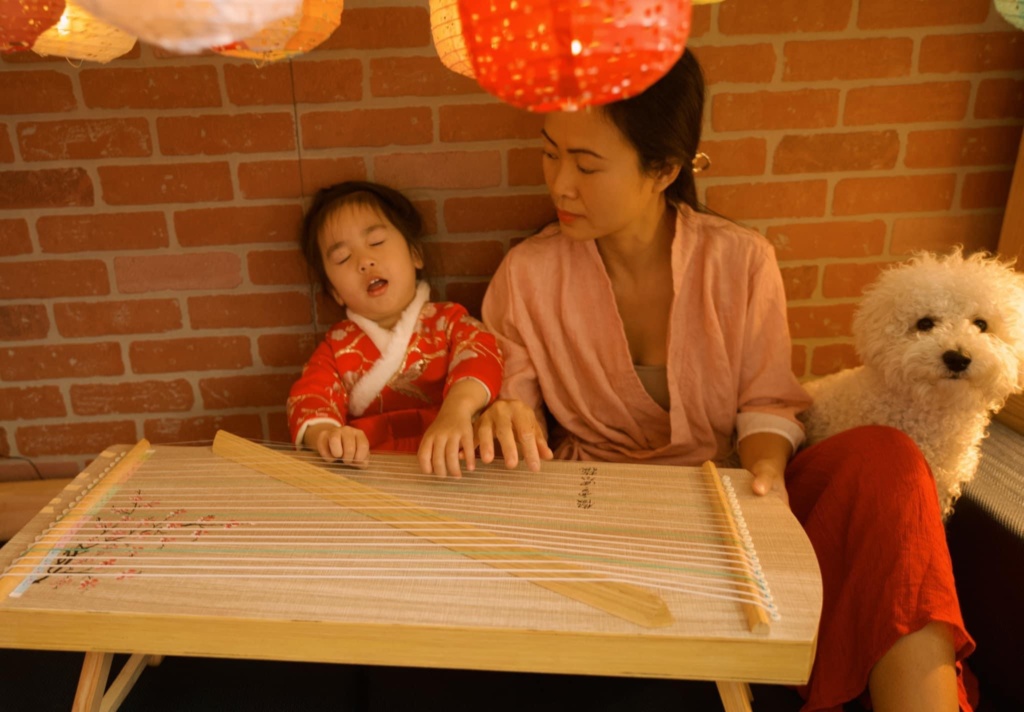
Final words
Sensory play and practical life activities are essential to the development of a young child and should be made available daily. They support all areas of development and promote creativity, confidence, and curiosity. More than anything, your child will remember the effort and time you put into creating positive experiences. We hope the above information helps you figure out how to create meaningful sensory and practical activities that both you and your child can enjoy for years to come.
PIN THIS POST FOR LATER!

